I was pretty sure, once I learned that Chaos Communication Camp 2011 was going to coincide with our time in Berlin, that I’d find a way to make my way there. And when my friend Jonas from Malmö announced he was flying down to go, I had my chance. Which is how Oliver and Jonas and I ended up on the journey to Finowfurt first thing yesterday morning.
It’s hard, maybe impossible, to put into words what the camp is like. Take thousands of hackers, relocate to an airfield 40km outside of Berlin for 5 days, and see what happens: that’s what it boils down to. The organizers provide the space, power, bandwidth, and all the necessities of life (showers, garbage removal, access to food and water); the participants make the camp.
We weren’t full-fledged attendees, as we weren’t camping out, but we got a good chance to experience everything from homemade Polish vodka to a laser-cutter demonstration to a soldering lesson, to an extended session with a DJ learning how to use Ableton Live to make edits. We arrived at camp at 11:00 a.m., left at 11:00 p.m. It rained a little in the middle, but we were happily hidden away in a tent. We ate extremely well – everything from lard and bacon on bread to mango lassies and watermelon shakes to one of the best burgers I’ve ever had.
Lots to digest from the 12 hours we spent there, and perhaps more to report later, but in the meantime, here’s the day in photos (see all the photos I shot here).
Retro Gaming Tent: Oliver Learns Pac-Man
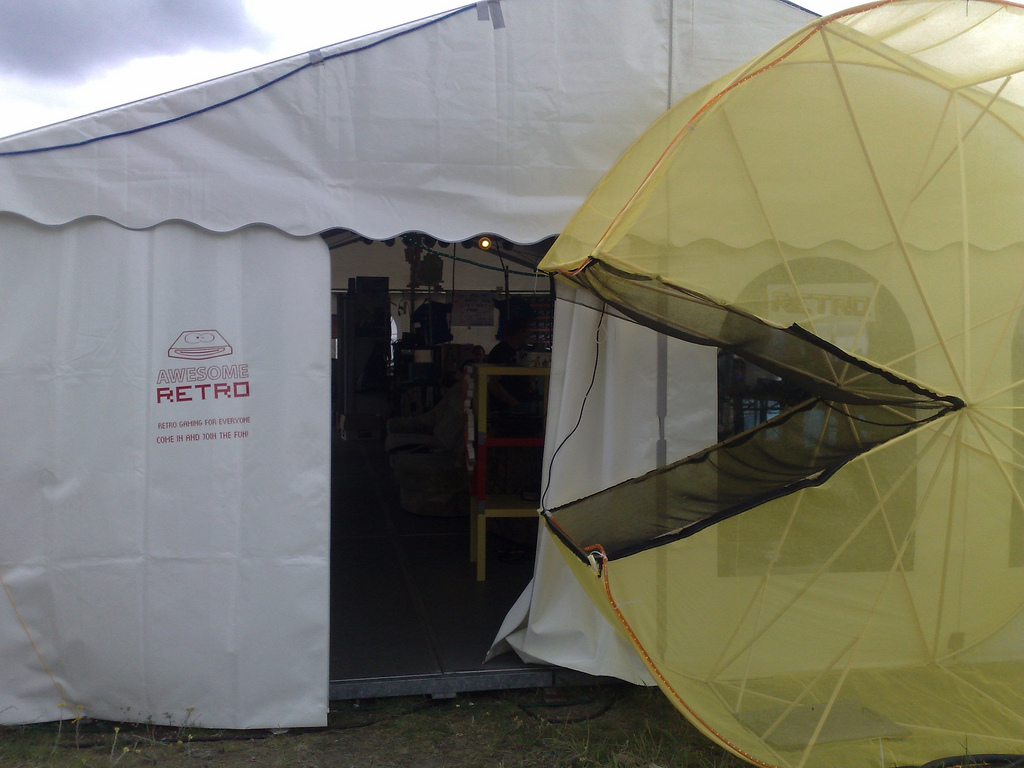
Oliver’s First Hack: Super-fork
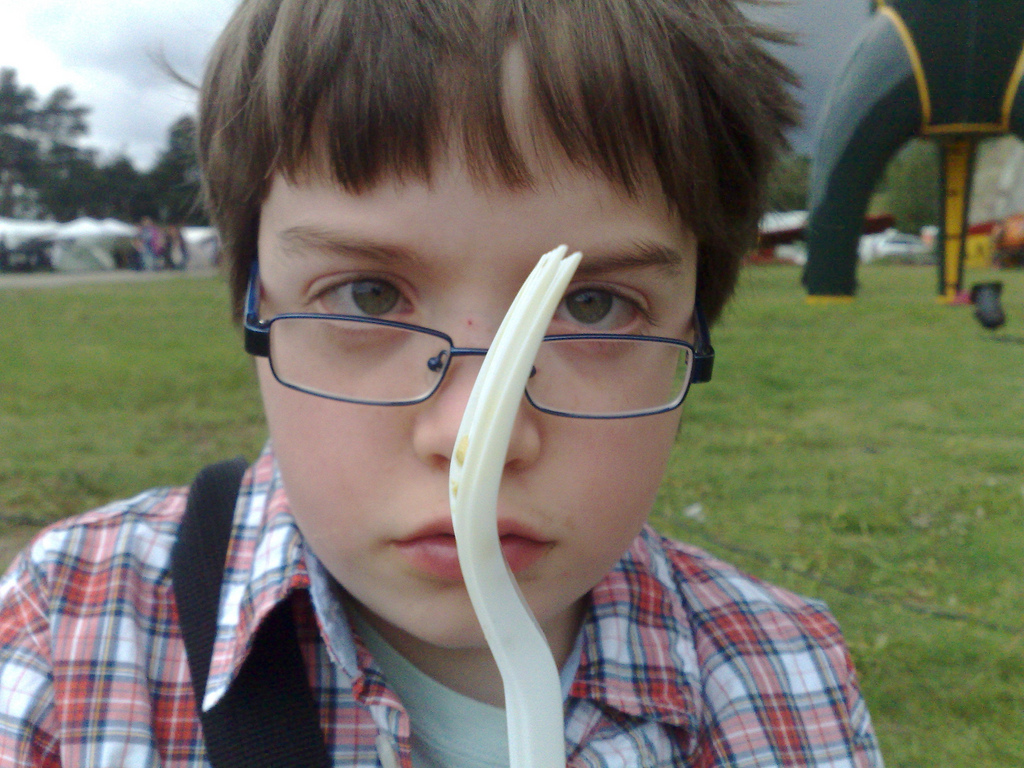
A Robot Encountered on the Way to Lunch
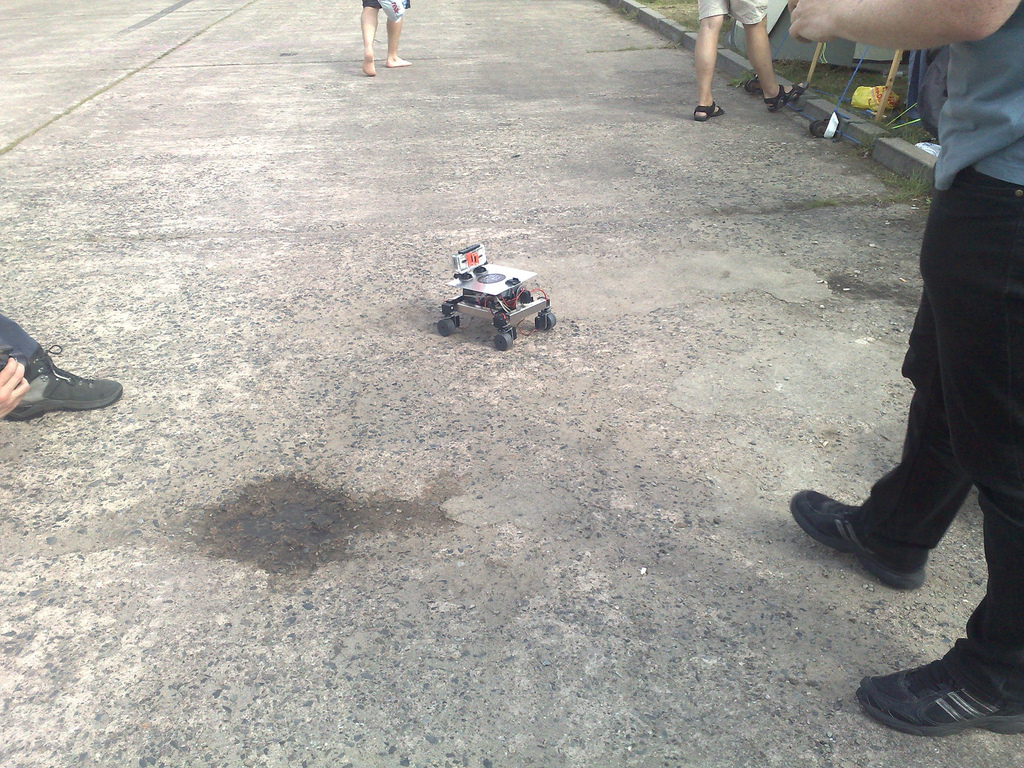
Two Hours in a Dome Tent with DJ Billy Idle
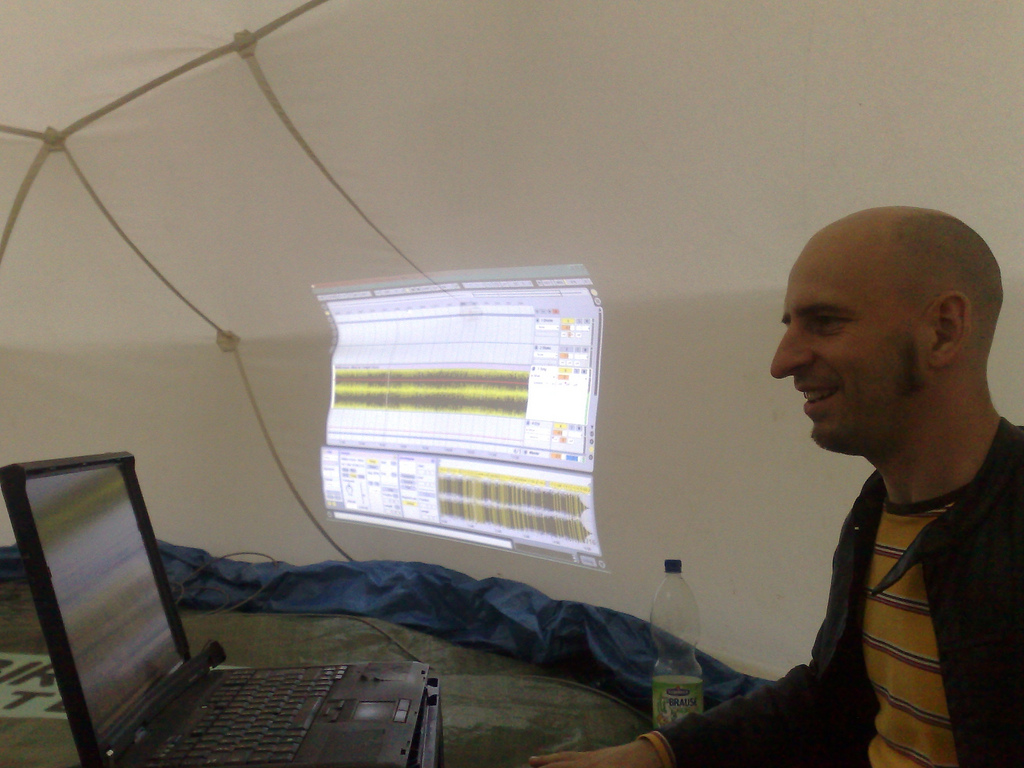
The Rain Clears
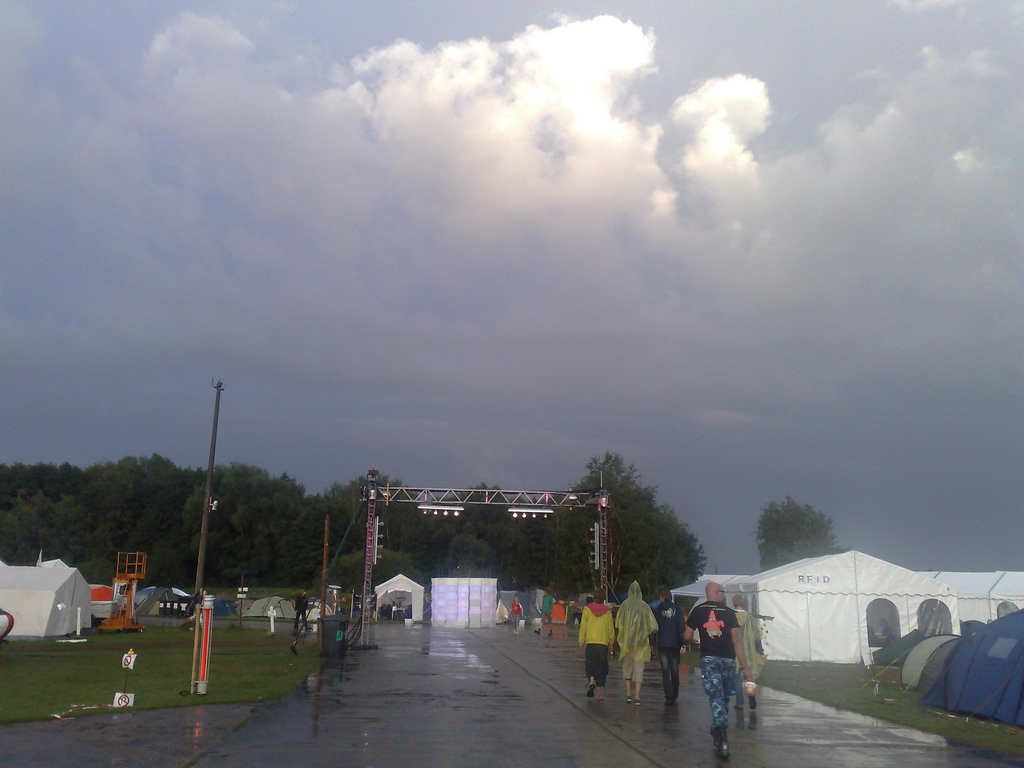
Watching a Talk from the Outside
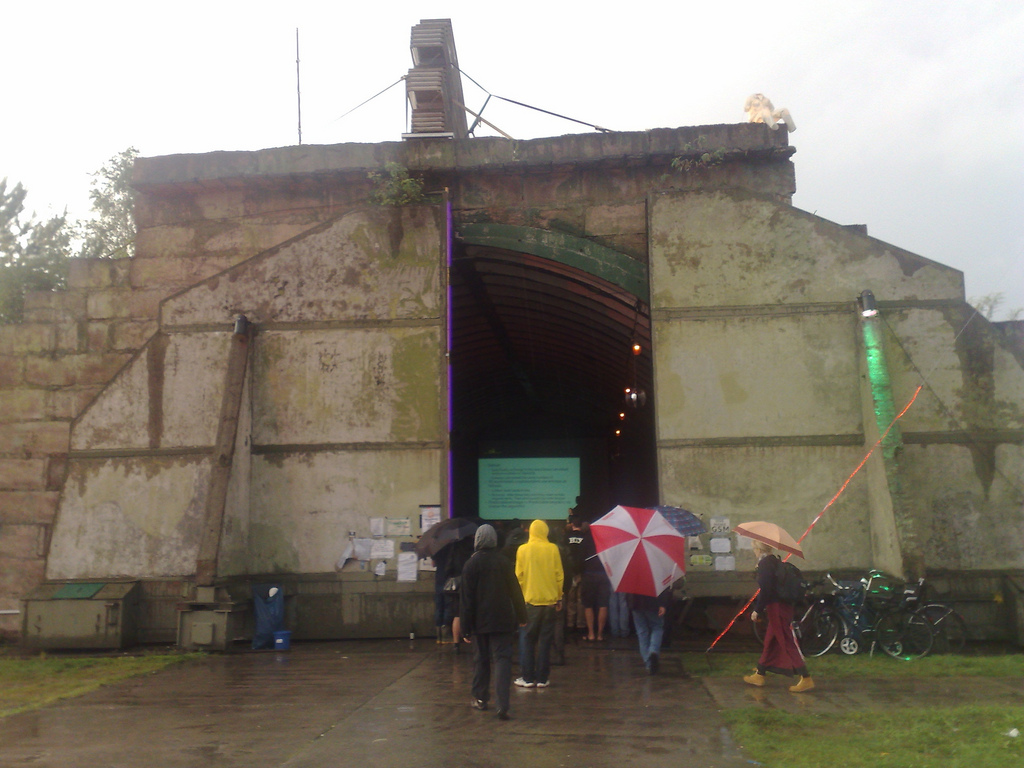
Revivified Airplane

Light Sculpture
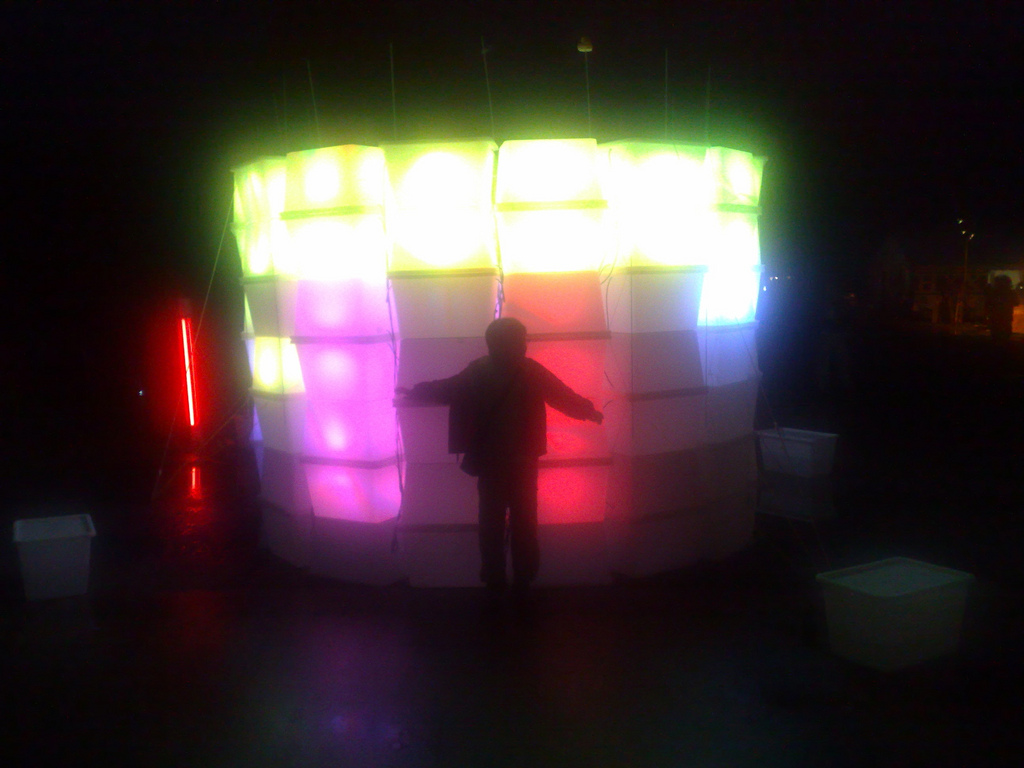
Neon + Fighter Jet
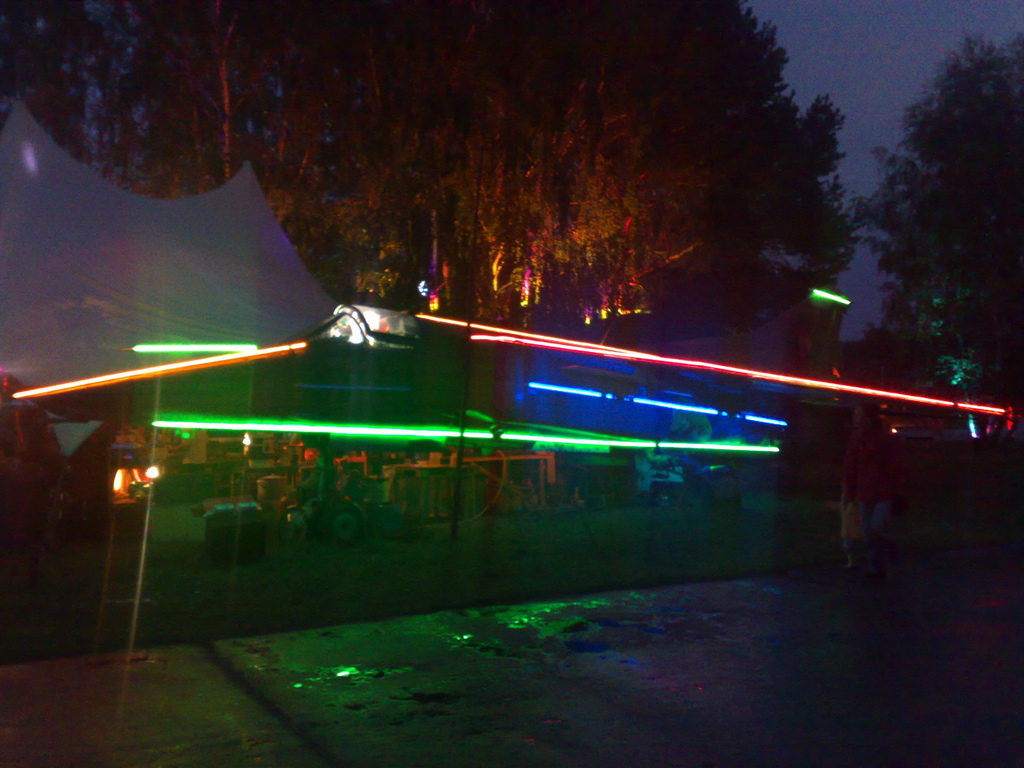
Hanger at Night
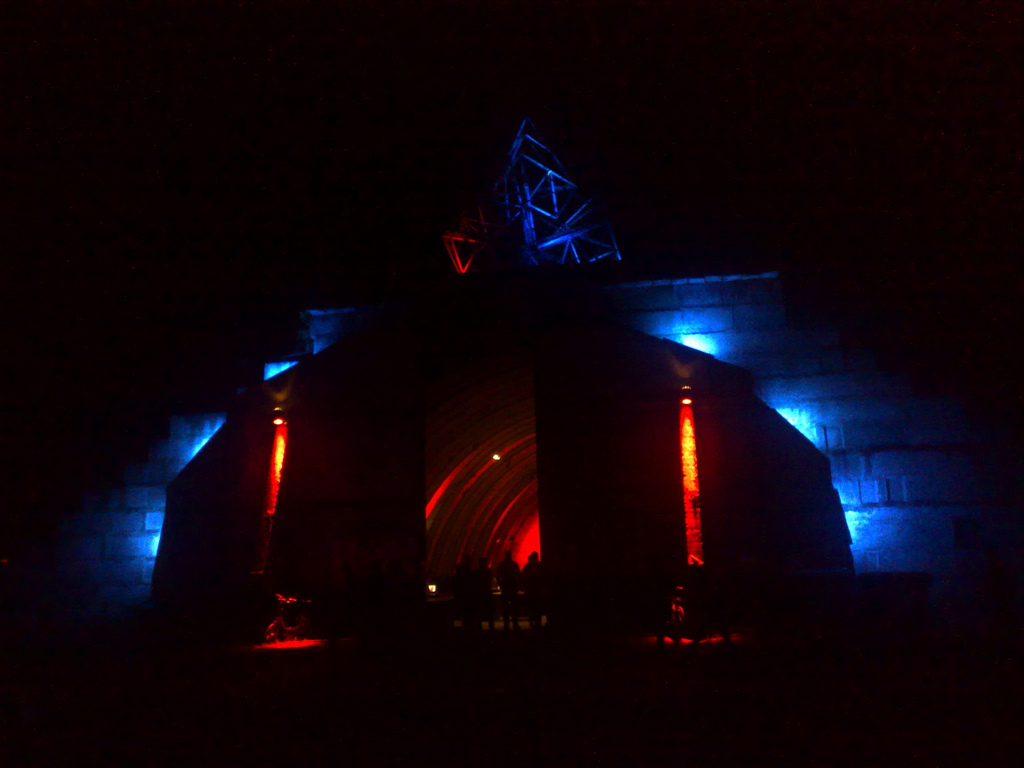
Oliver the in the Steam of the Rocket
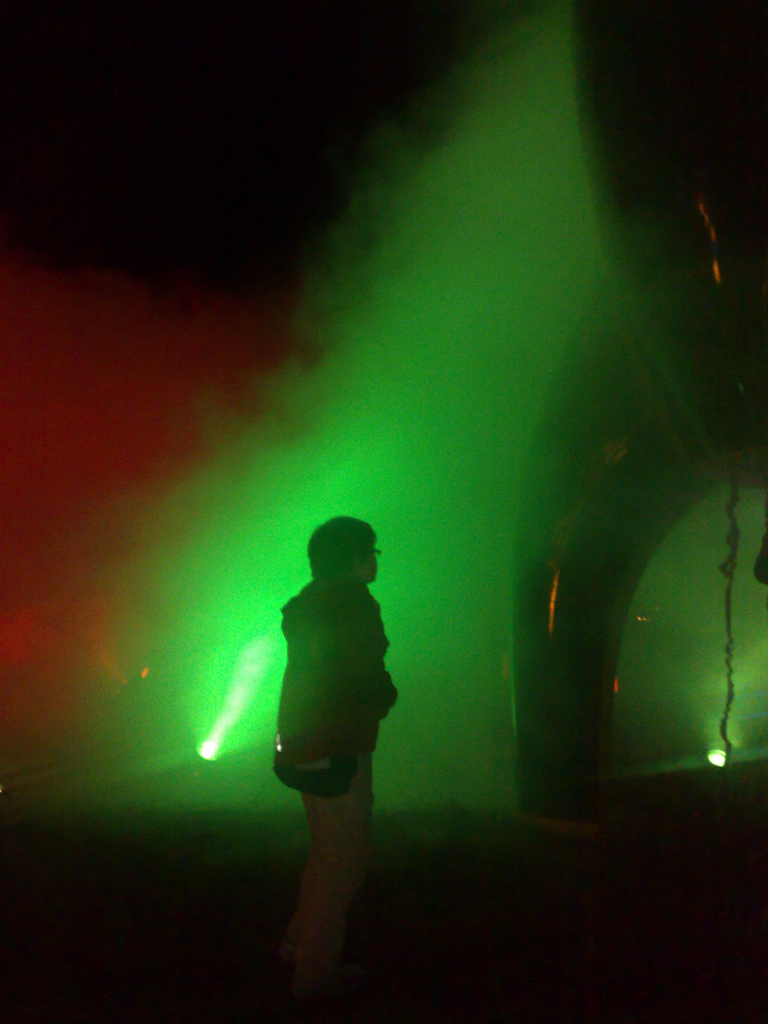
You’ve all probably been asking yourself “what does this ‘hot desking’ that Peter keeps casually referring to actually look like?” Well this morning I came into Betahaus first thing in the morning and was the first one here, which allowed me to take some photos without unwittingly taking photos of unsuspecting coworkers:
Here’s one of the third-floor workspaces, the one where I’ve ended up working most often, mostly out of habit and because it has desks at a good height for me:
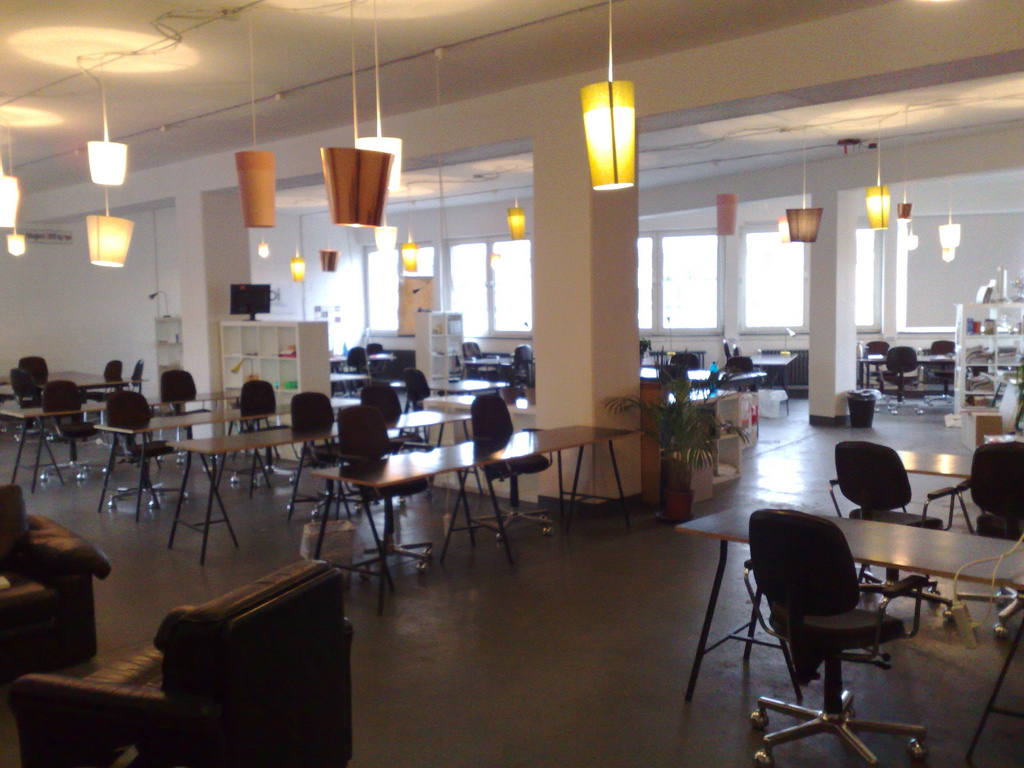
And here’s what my “hot desk” setup looks like. I leave my full-size keyboard, mouse and other cables inside a locker here at Betahaus when I leave for the day and cart my laptop home and back every day.
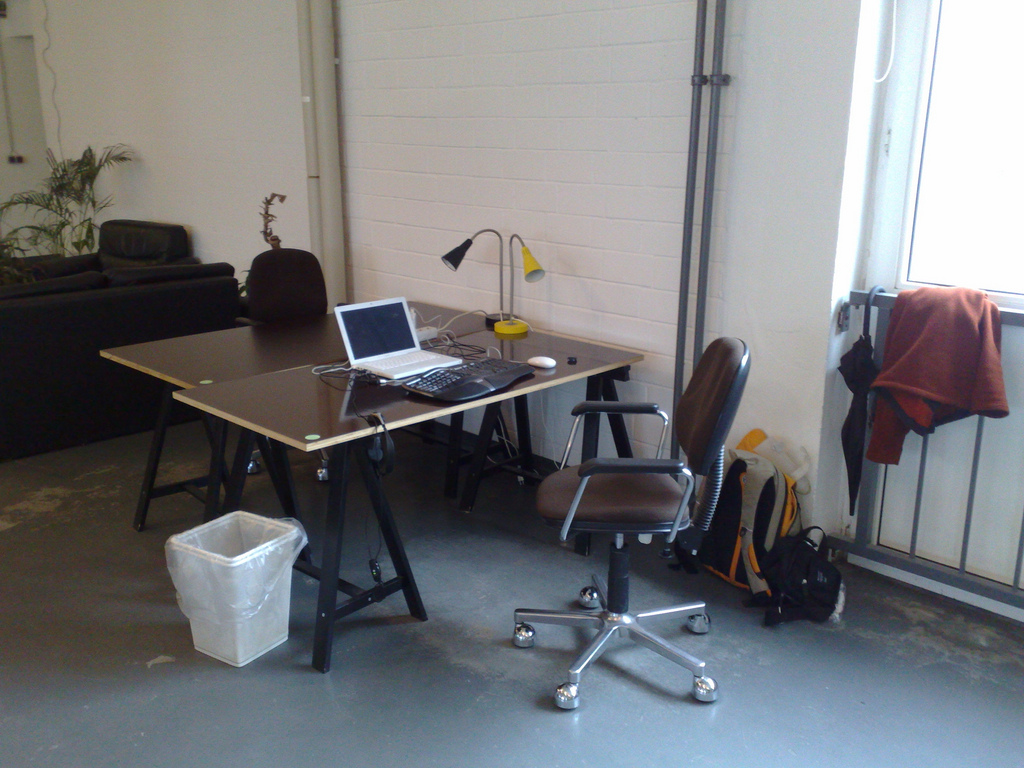
Note the green dot in the corner of the desk: this means that it’s eligible for use by itinerant “flex” users like me (as opposed to those with a more permanent “leave your stuff on your desk when you leave” arrangement). Every desk comes with power, very fast and reliable wifi, a desk lamp, and a somewhat-ergonomic chair.
All this for €149 – about $200 – for the month. Here’s the building looks like from the outside:
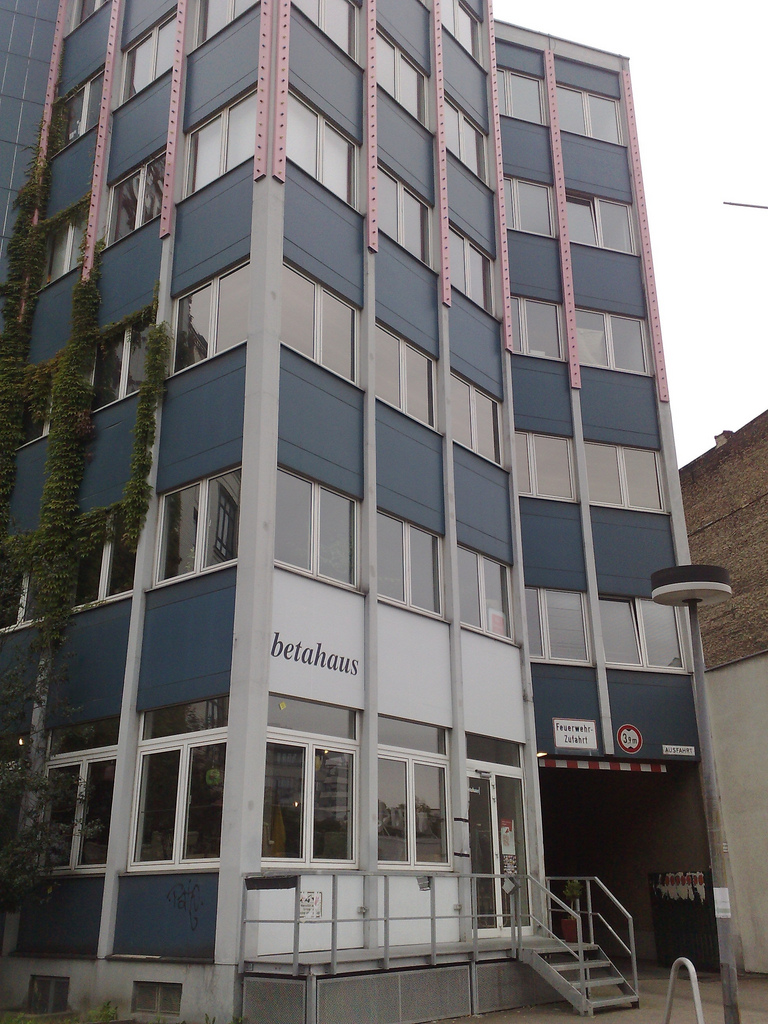
I’d always assumed that I wasn’t cut out for working in a room full of other people and their various mobile phone rings, conversations about “breaking the personal care supplies market wide open” and comings and goings, but it turns out that, perhaps because most of the conversational part is happening in non-English languages, it’s a comfortable sort of white noise. I’m not sure I’ll be able to back to the relative quiet and peace of Reinvented HQ, and may have to hire German-speaking extras to come in and simulate Betahaus-like conditions for me.
Today was seasons day in the letterpress shop: Frühling, Sommer, Herbst, and Winter (generously contributed translations by Catherine, via Google Translate over the phone). One of the nice things about using a “defective” press – the Grafix proof press I’m using here in Berlin is only partially working and I need to manually roll the ink onto the type – is that printing multiple colours at the same time is easy. Or at least easier.
I printed 40 copies of a 20 cm by 40 cm sheet in four colours – green, red, orange and blue – and once the ink is dry tomorrow I’ll return and slice them up into 20 cm by 10 cm cards, which will fit nicely inside the 210 mm by 110 mm translucent envelopes I just picked up across the street at Modulor. I should have everything in the mail to my global network of subscribers by mid-afternoon Wednesday.
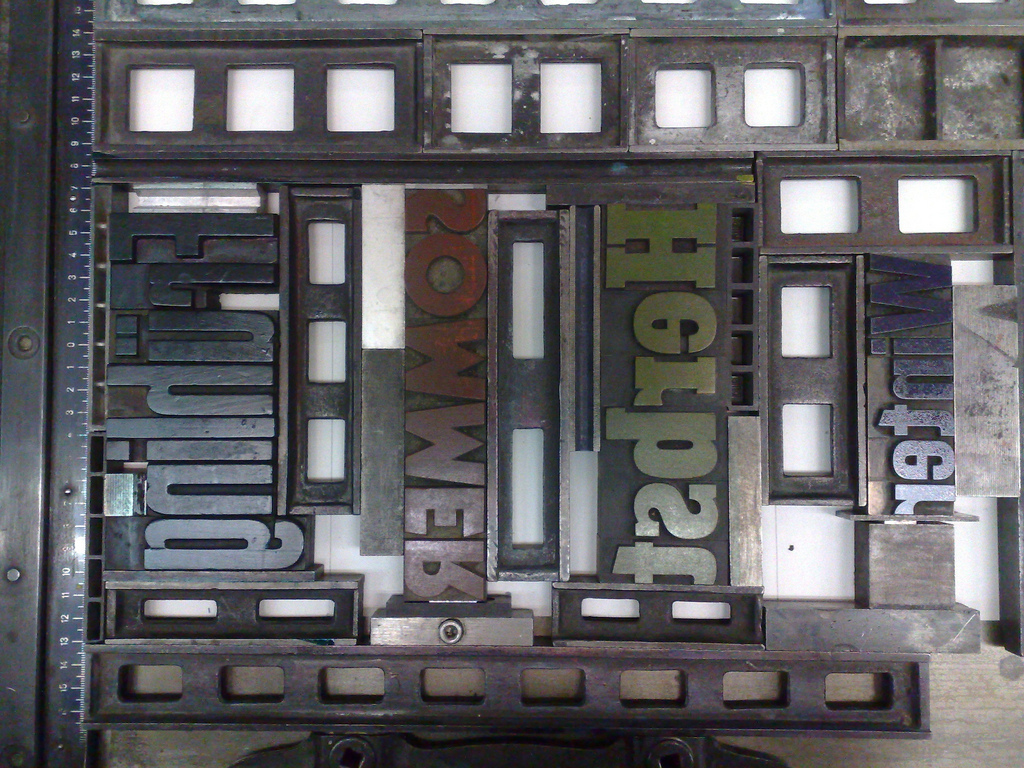
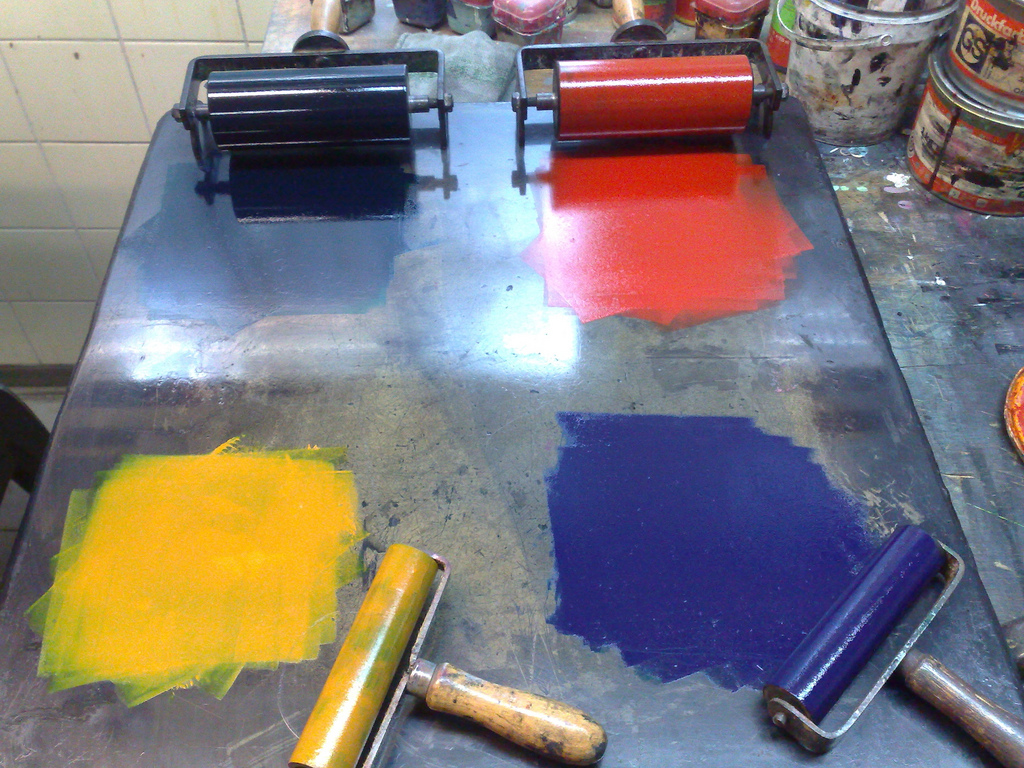
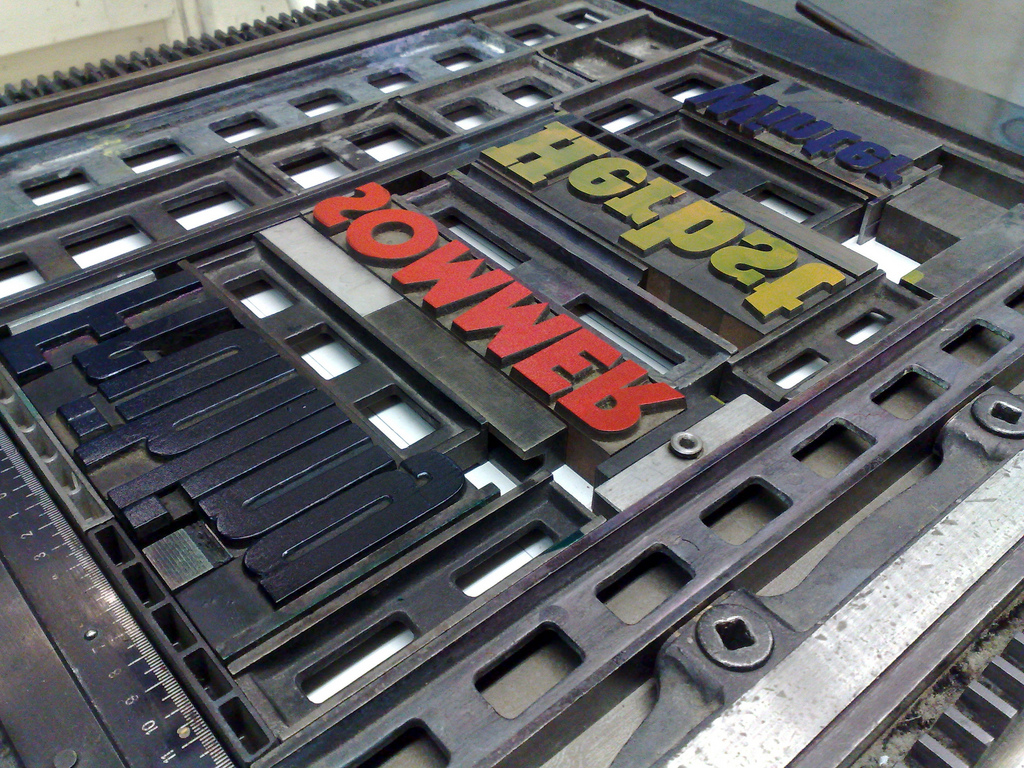
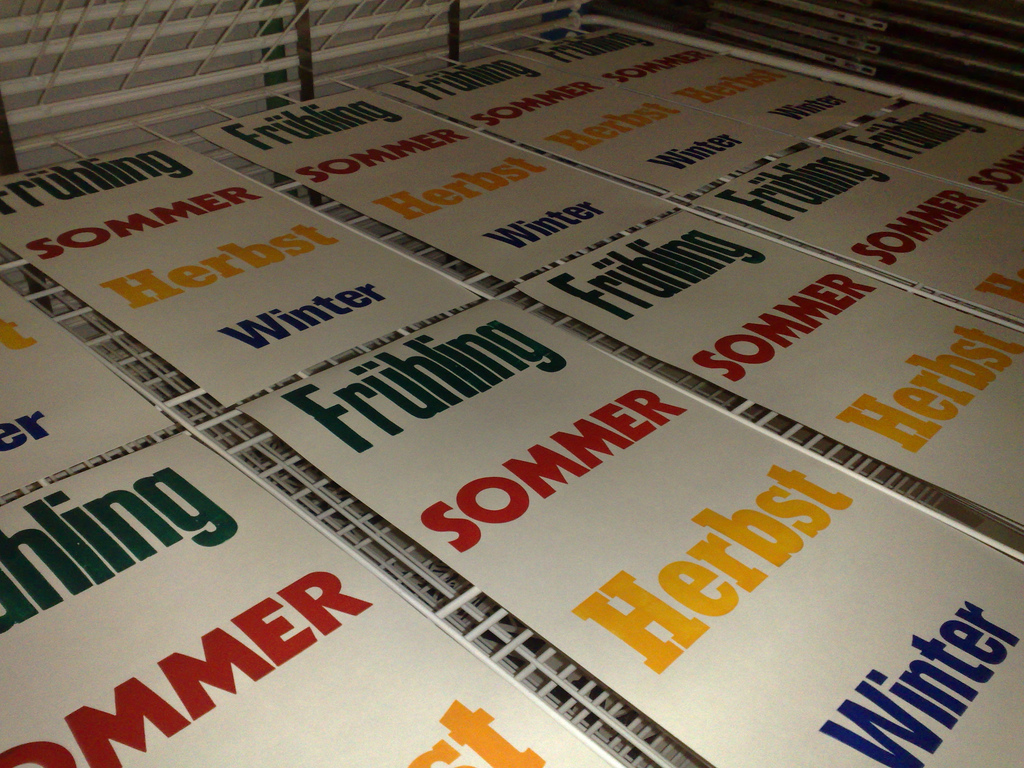
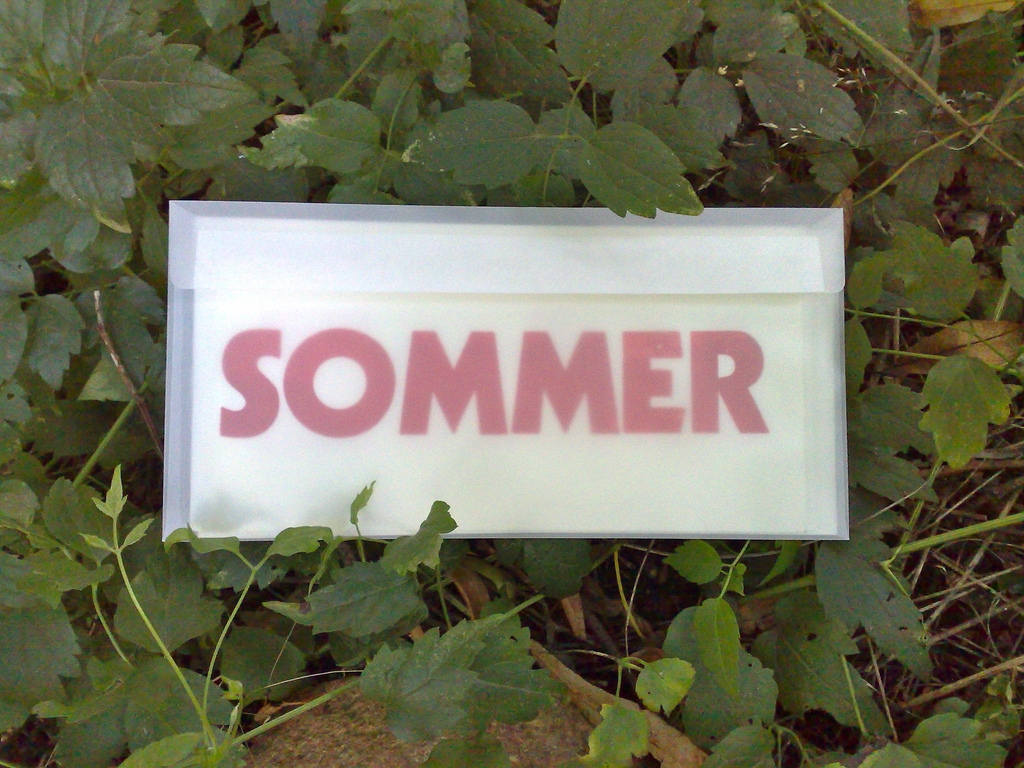
When you imagine a typical Sunday in Berlin, what comes to mind more than spending the day by the lake at an abandoned tuberculosis sanatorium at a festival of urban art?
That was our Sunday, today: artbase2011.
Not quite sure what we were getting ourselves into, we headed off early, catching the 9:30 a.m. subway, then a regional train, and then a bus, and then a 2 km walk. By 11:00 a.m. we were in the woods of Grabowsee, north-east of Berlin about 15 minutes from Oranienburg. Built as a sanatorium in the 1930s, later used as a military hospital, in recent years Grabowsee has been in a “deep slumber” (so says the event’s website); as we walked across the Grabowsee bridge and through the woods we got a good sense of what a sanatorium in slumber looks like:
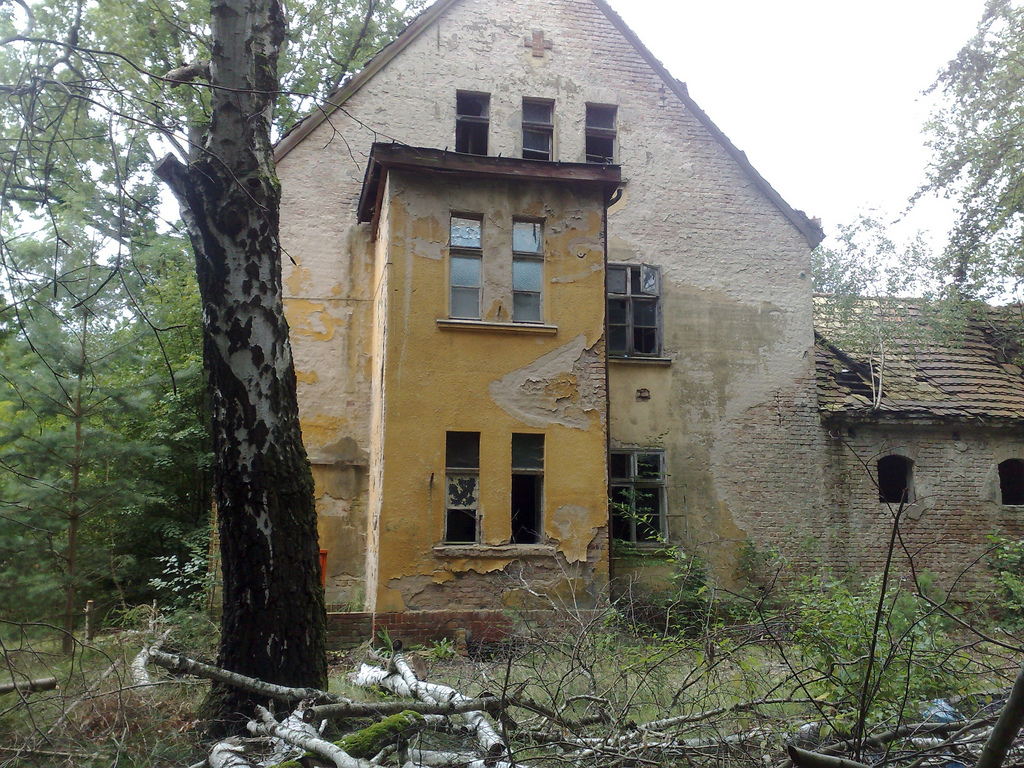

Ten minutes into the woods along a well-groomed cycle path we came to a booth staffed by a pleasant but imposingly muscled man. We paid our €10 each (Oliver was free), got a wrist band, and proceeded on to the next level, 5 minutes further along the path, where we were quizzed, half-heartedly, about whether we were bringing alcohol in with us (it seemed that the likelihood, in the gate-man’s eyes, of a suburban couple smuggling in beer was not great; there was no bag searching).
And then we were there.
It wasn’t immediately clear where “there” was.
We emerged into a clearing populated by several large open warehouses, a couple of sleepy-looking food stalls, a giant foil-covered Trojan horse and with the pulsing beat of a techno DJ set up in the opening of one of the warehouses. I’m sure, to the Berlin urban techno hipsters that were chilling all around we must have looked like we’d taken a wrong turn looking for the golf course (we all think we are 200% hipper-looking than we actually are, which places me somewhere in the “Richard Nixon” level of presenting myself in an environment like this).
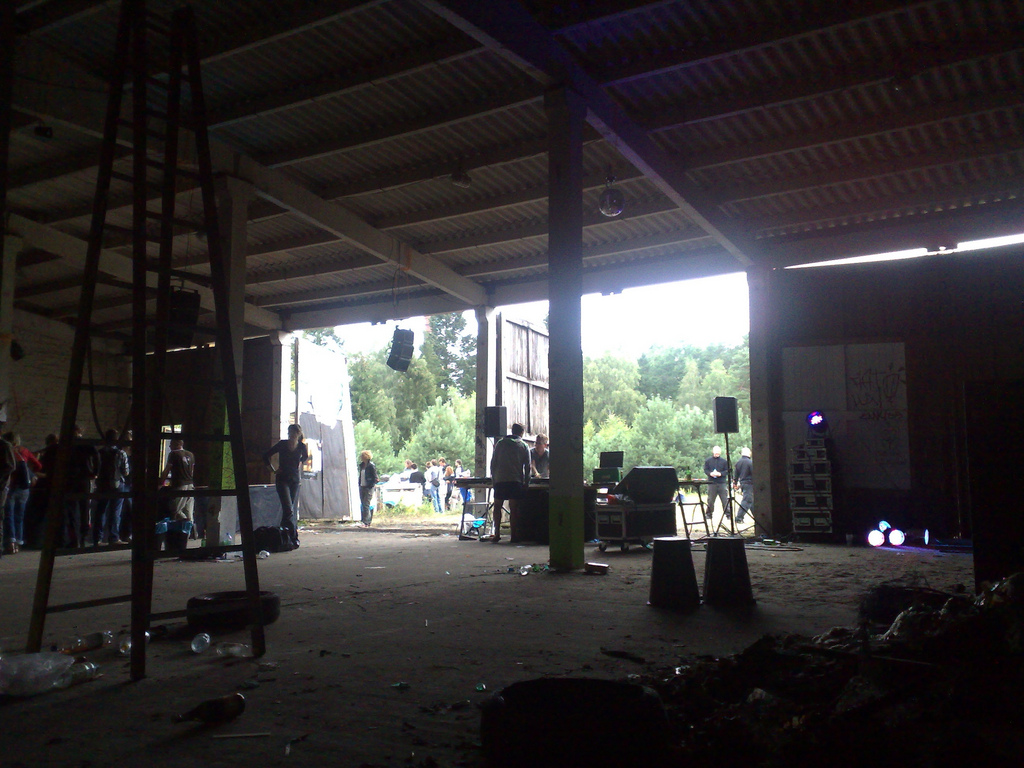
That said, everyone was very nice and it wasn’t long before we had cake and a sit and began to figure out where we were.
And where we were was in the middle of a spontaneous nexus of spray-painted masterpieces covering the ancient infrastructure that the forest was doing its best to take back.

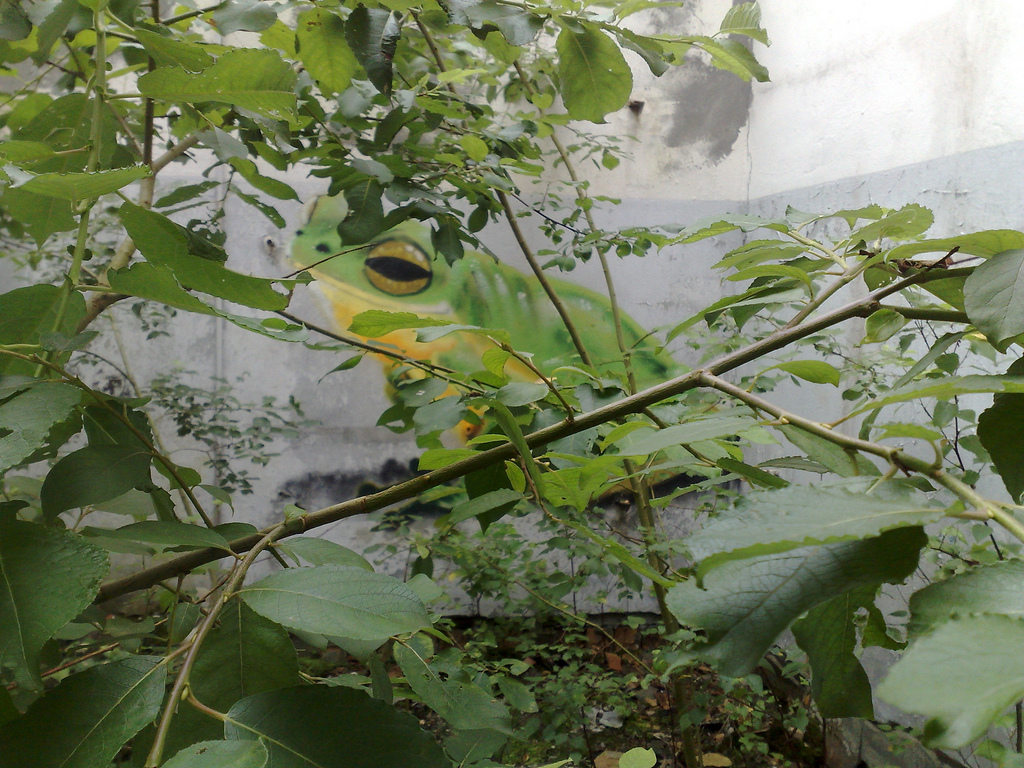


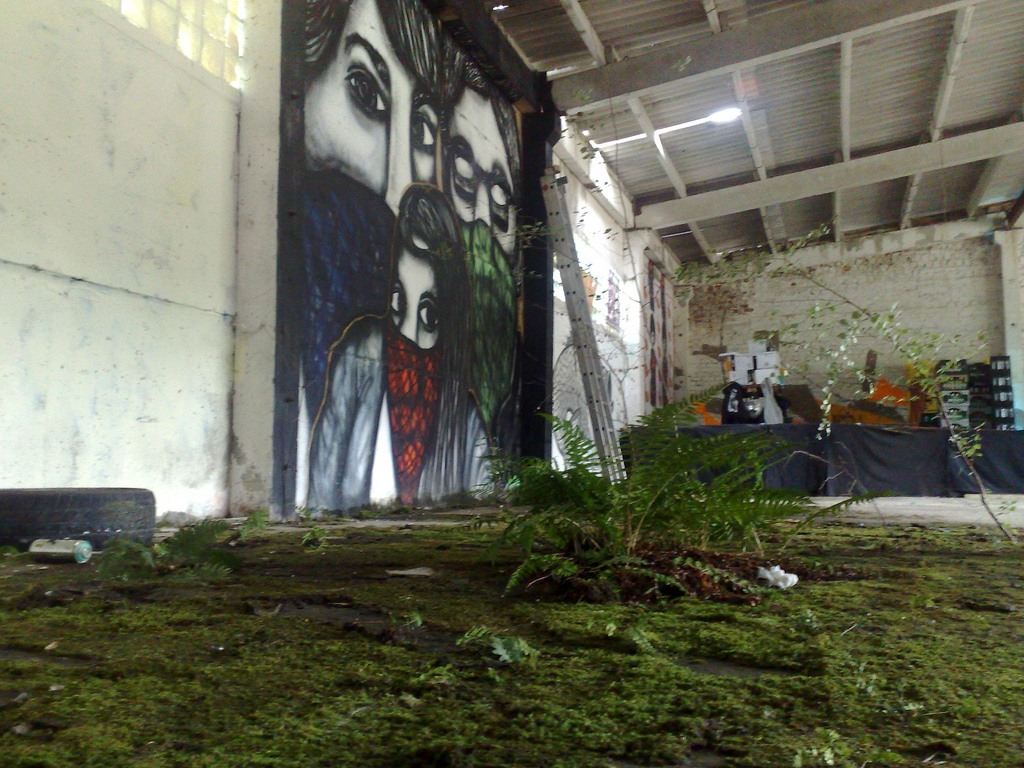
Building after building after building received the same treatment, and there was hardly a door or window or beam uncovered. The work ran the gamut from banal to intriguing to mind-bogglingly profound. If nothing else it made the notion of experiencing art in a traditional white gallery box seem absurdly narrow-minded.
All of this was, of course, in the midst of the slumbering sanatorium, which, as we walked through the forest, we found new parts of around every corner:

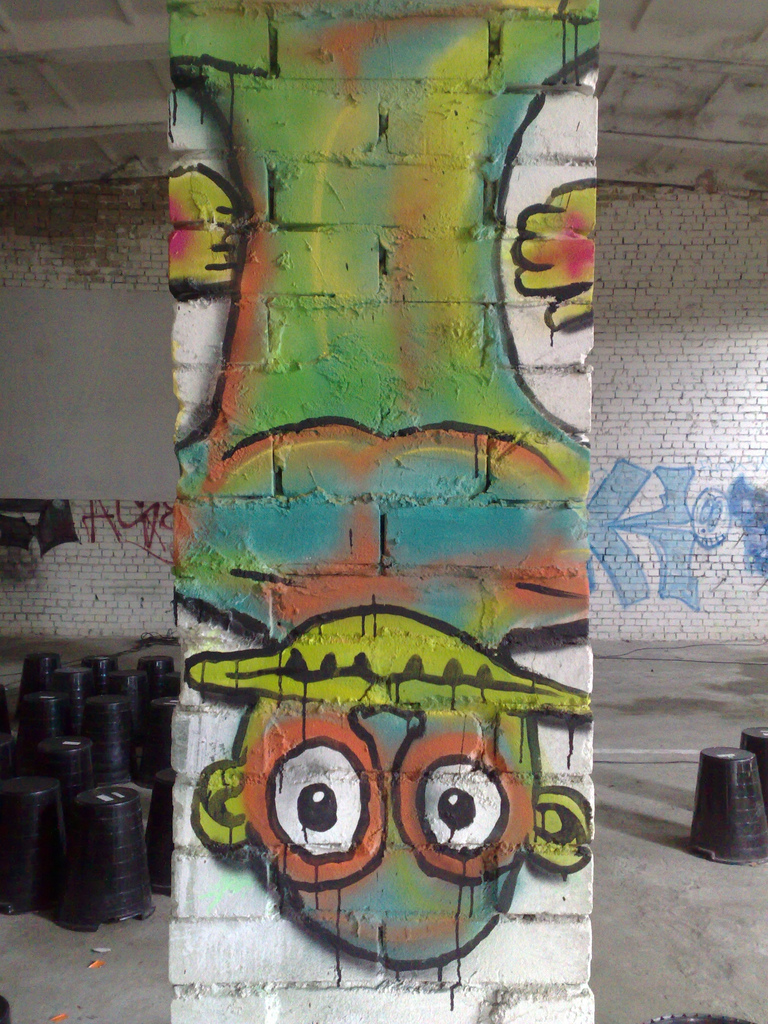

Down toward the lake was a large group of tents – the festival started Saturday at noon and you could, if you liked, come and camp out on Saturday and Sunday nights – and then, by a crumbling church, a sort of café cum workshop cum studio cum crashpad in yet another building, filled with paintings and people making new art, and people asleep on moldy sofas. By this point feeling like a fish out of water seemed beside the point, so we just wandered around drinking it all in.
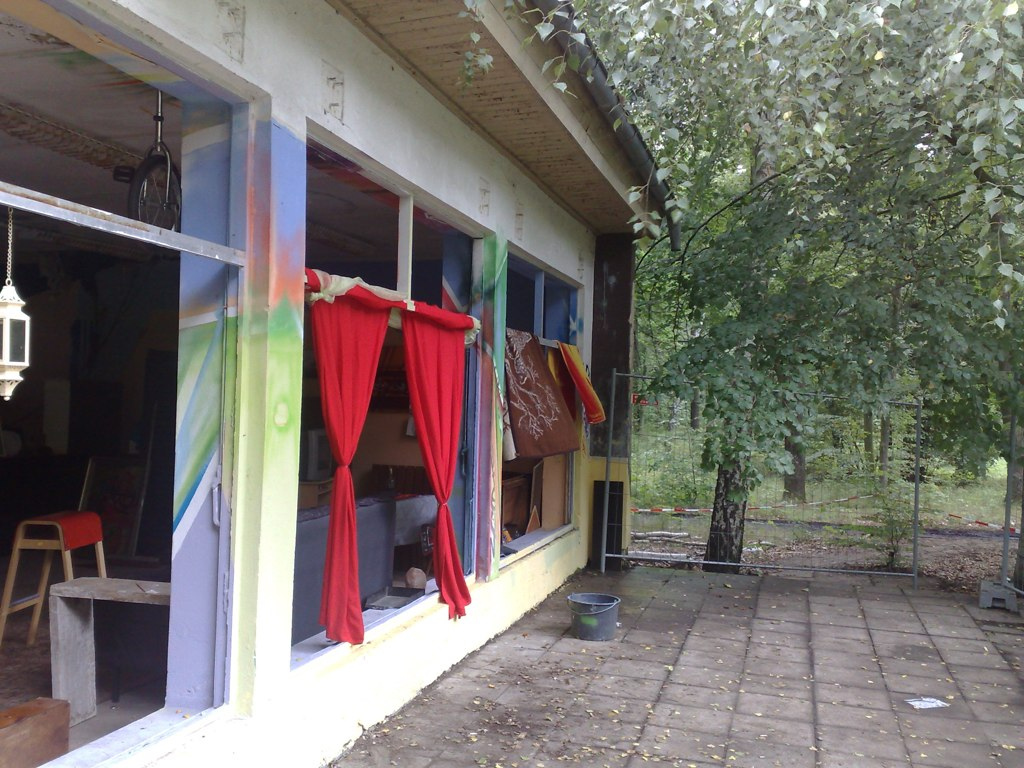
It was all deeply, deeply weird, but also deeply, deeply interesting. I can’t say as though I grasp completely the lifestyle that supports spending summer weekends by the lake making artworks on abandoned buildings, but I’m certainly happy that there is such a lifestyle.
The bus back to the city left every 2 hours, so we started to head back toward the road around 2:00 p.m., passing through another couple of buildings on the way out, and running across a different slice of the art:
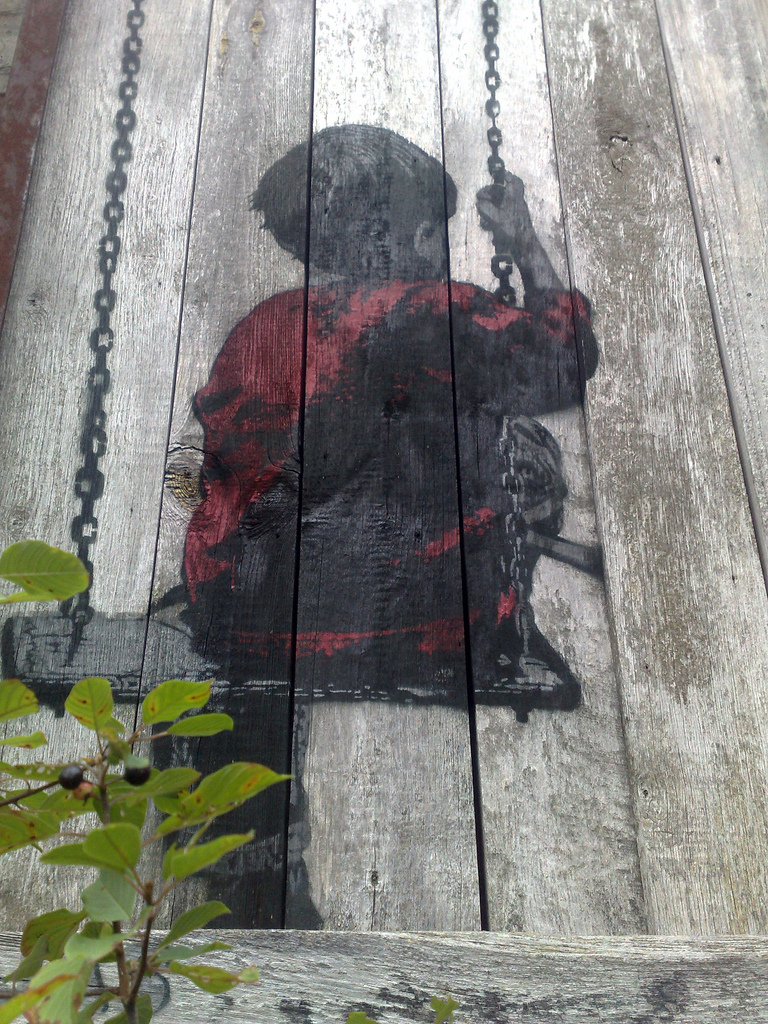
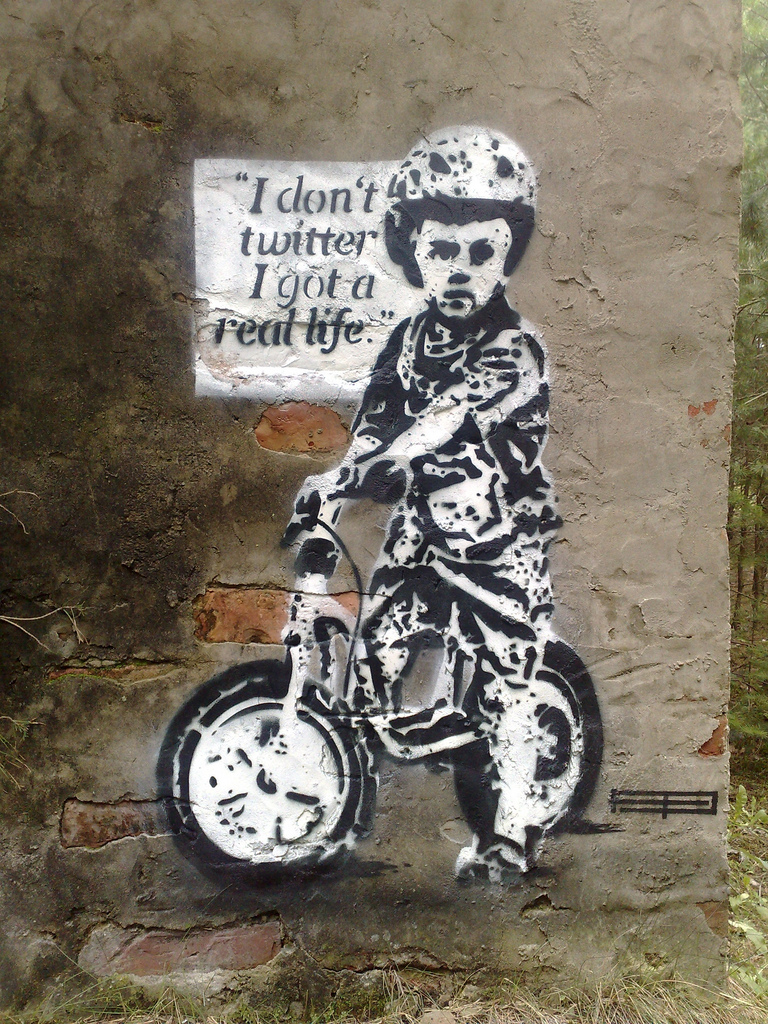
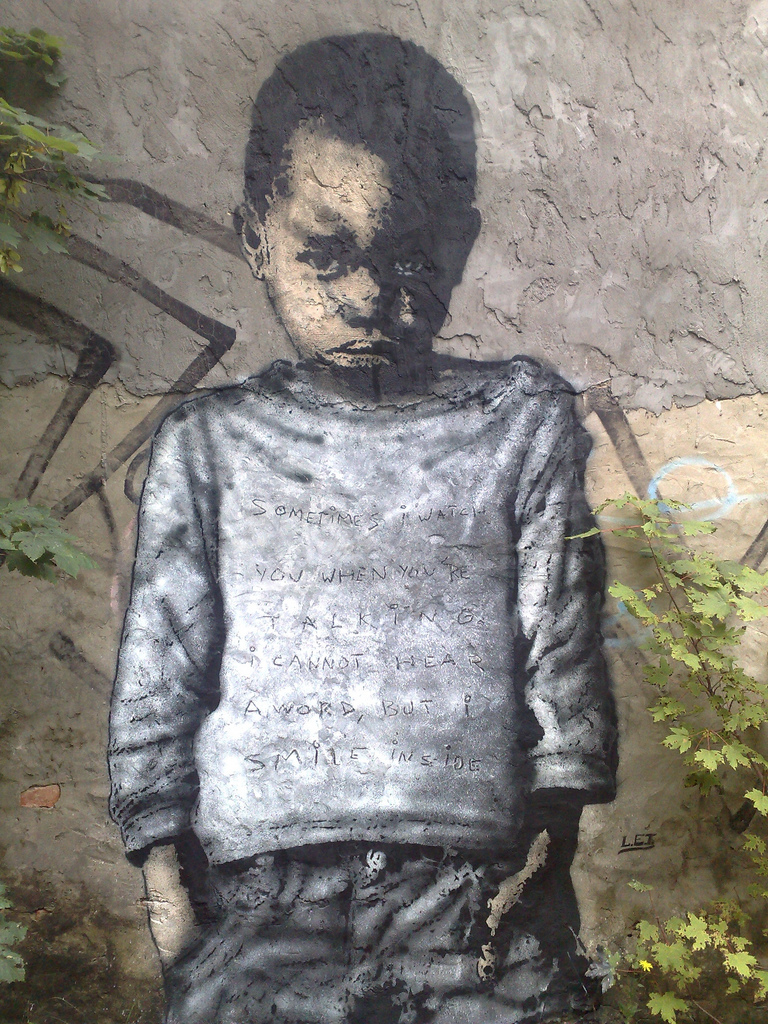
By 5:00 p.m. we were sitting inside Maria Bonita in urban Berlin eating tacos and, I think, not quite sure what had just happened. But we were all glad we went, and, at least for me, what I think of when people talk about “art” has expanded to include a kind of environment and a kind of artist I didn’t know existed before.
Today’s project at Druckwerkstatt here in Berlin was a full Moon calendar – Vollmond Kalender – for 2012, an attempt to bring together my Old Farmer’s Almanac self with my printing self.
Last night, in preparation, I started with the Almanac.com Full Moon Dates page, then translated the month names into German (when in German, print as the Germans do, I reason).
When I arrived in the studio this morning my first task was to search through the drawers of wooden sans serif type to assemble each month and its corresponding date, a significant challenge given that many of the fonts are incomplete (and that I wasn’t willing to go the “mix and match typefaces” route, at least not within words). This took about 45 minutes.
Next, I had to find a way to jigsaw puzzle all of these months into a rectangular shape suitable for printing; this took about two hours, give or take, and I went through several iterations and several tweaks of the final version.
Here’s the layout I started with:
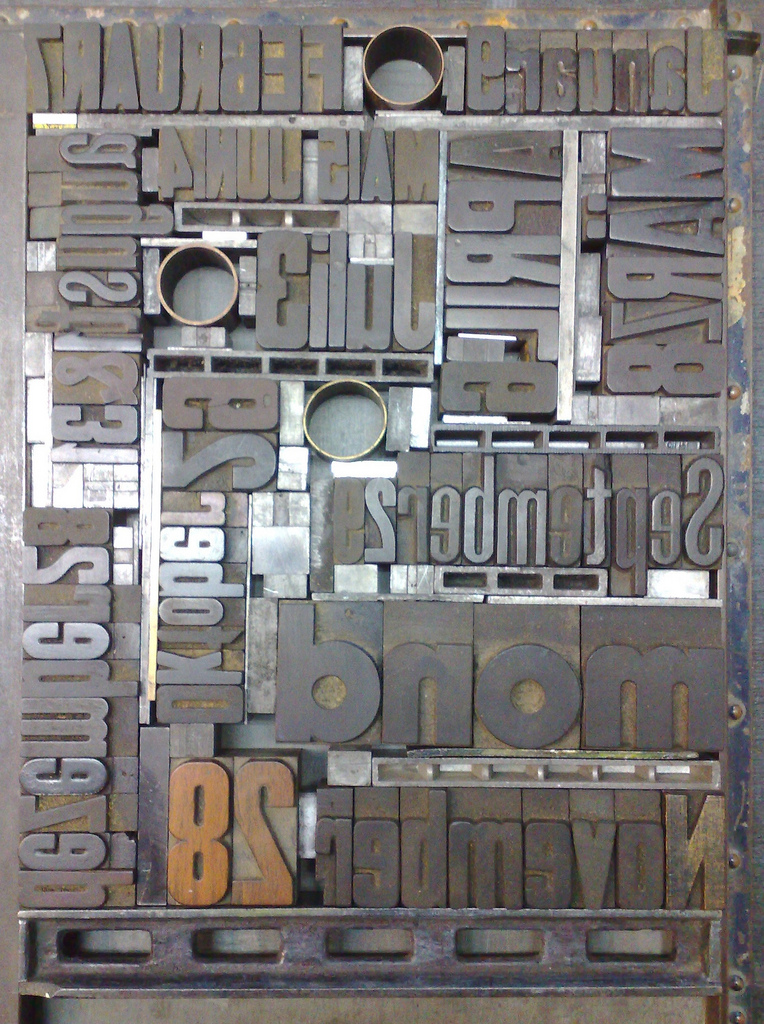
And here’s what I finished up with:
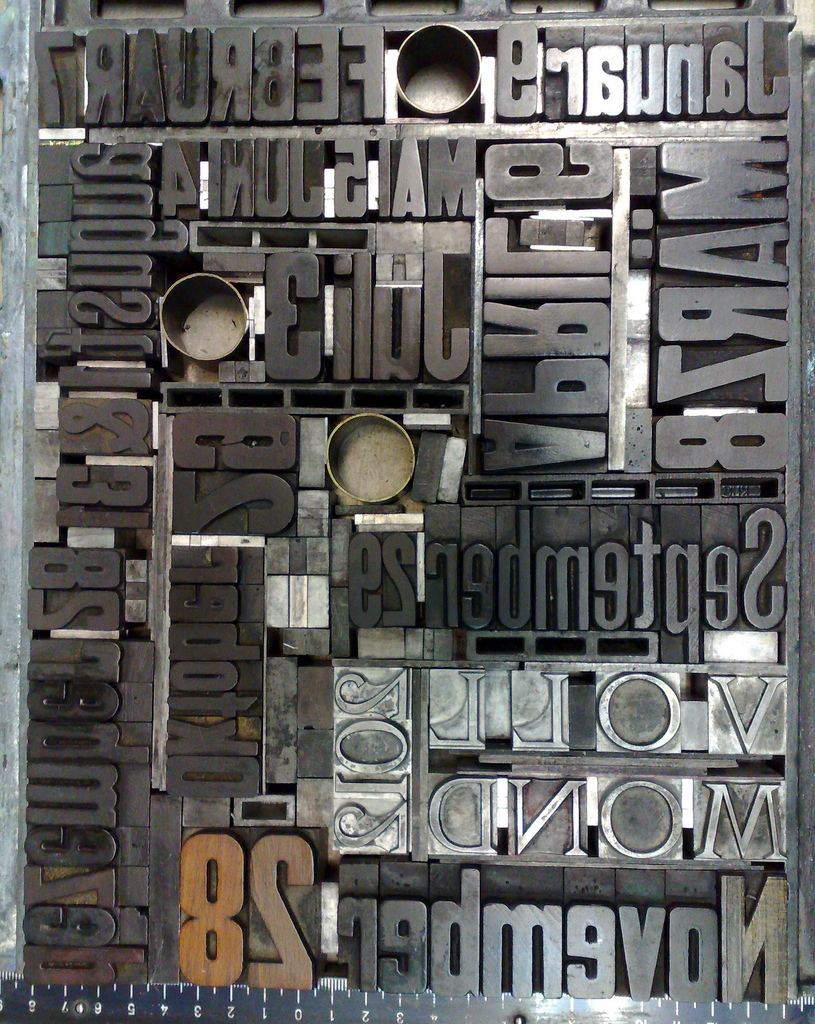
The biggest changes were the switch form a sans serif “mond” (Moon) to a serif “Voldmond 2012” in metal spread over two lines and the introduction of spaces between month names and day numbers (I thought munging them together would be cool; it was just confusing).
Over lunch I purchased some large sheets of grey paper and green paper at the Grün Papetrie up the street, cut these into 25 cm by 29 cm pieces on the giant paper cutter in the book bindery, and then experimented with printing in different colours. Here are some of what resulted:
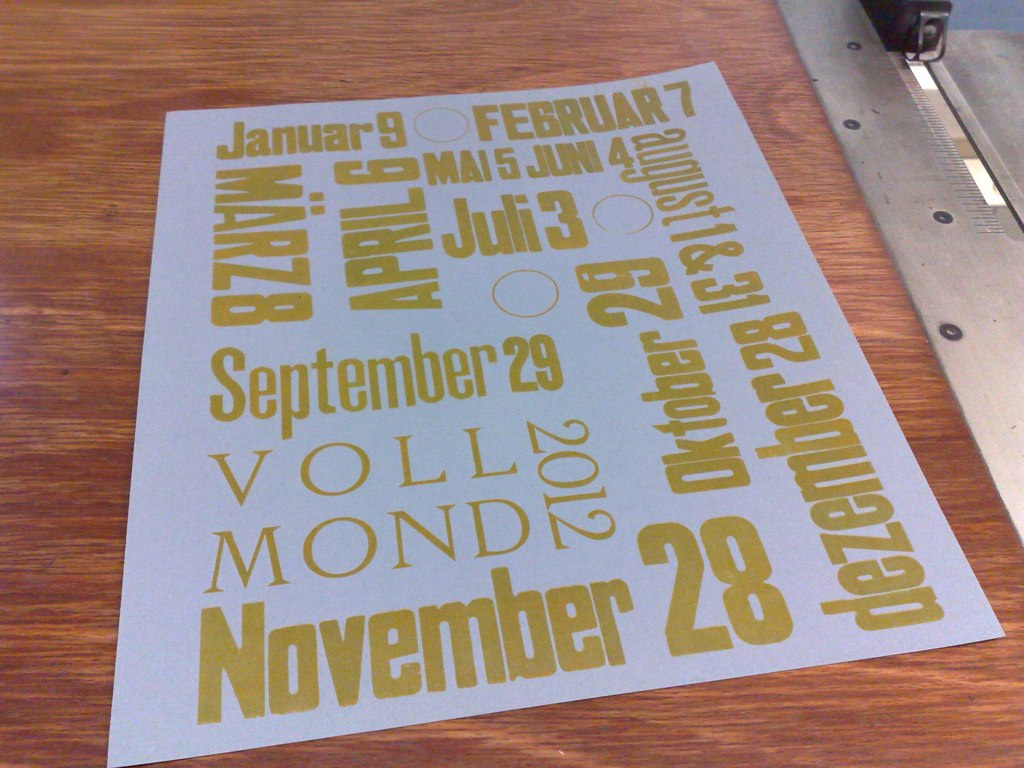
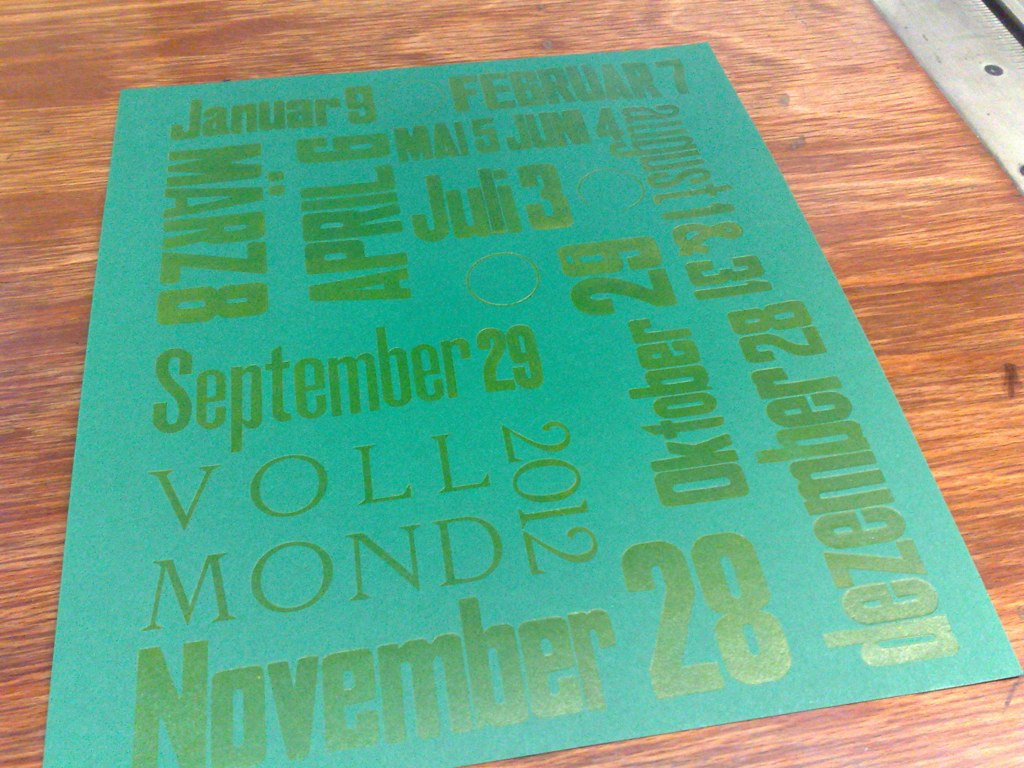
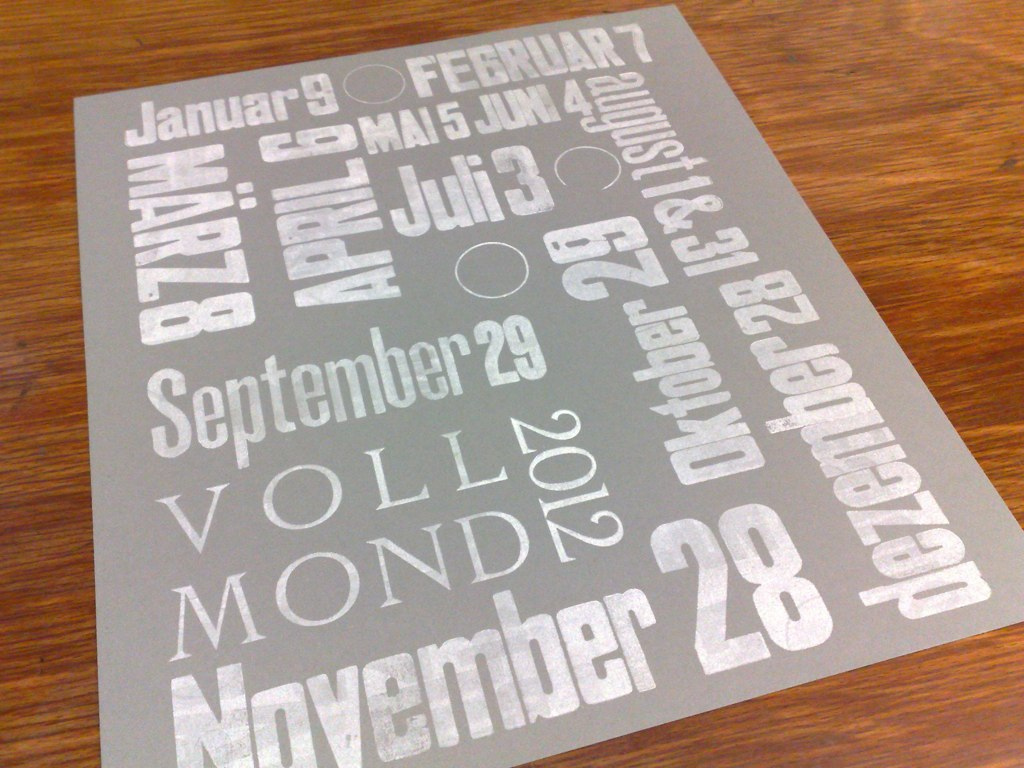
That last one – white on grey – is my favourite, as the mottled white ink (I didn’t get complete coverage) resulted in letters printed with a distinctly Moon-like look:
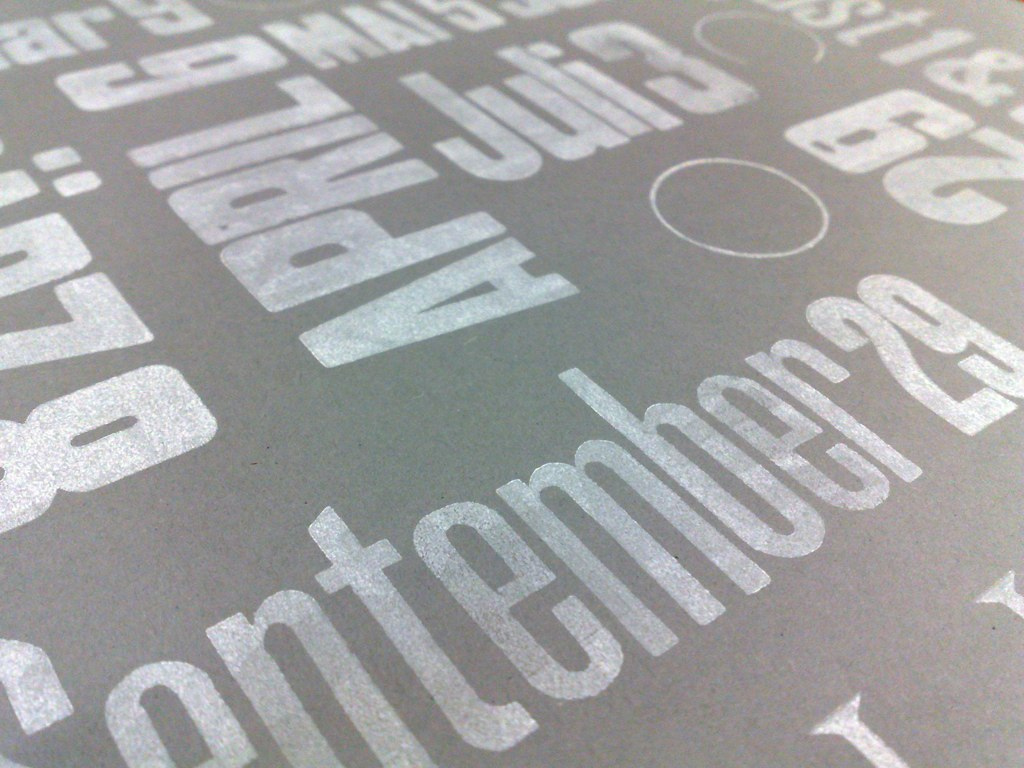
Now all I gotta do is figure out how I’m going to mail these to subscribers without going broke; I’m thinking that, because there are a few cities – Charlottetown, Montreal, Malmö – that have more than one subscriber, I might gang these city’s prints together and mail them in a big envelope; the recipients can then all get together, have a beer, and get to know each other.
I ended up working from home on Friday, hanging out with Oliver on a chilly, rainy Berlin day while Catherine made her way up to Mitte to hang out with knitters for the afternoon (she got very, very wet in the process, but her spirit persevered). We suffered the rain for a block and a half around noon to go to Schönes Café for a late breakfast of chocolate-banana pancakes (for Oliver; very good), muesli (for me; also very good) and coffee.
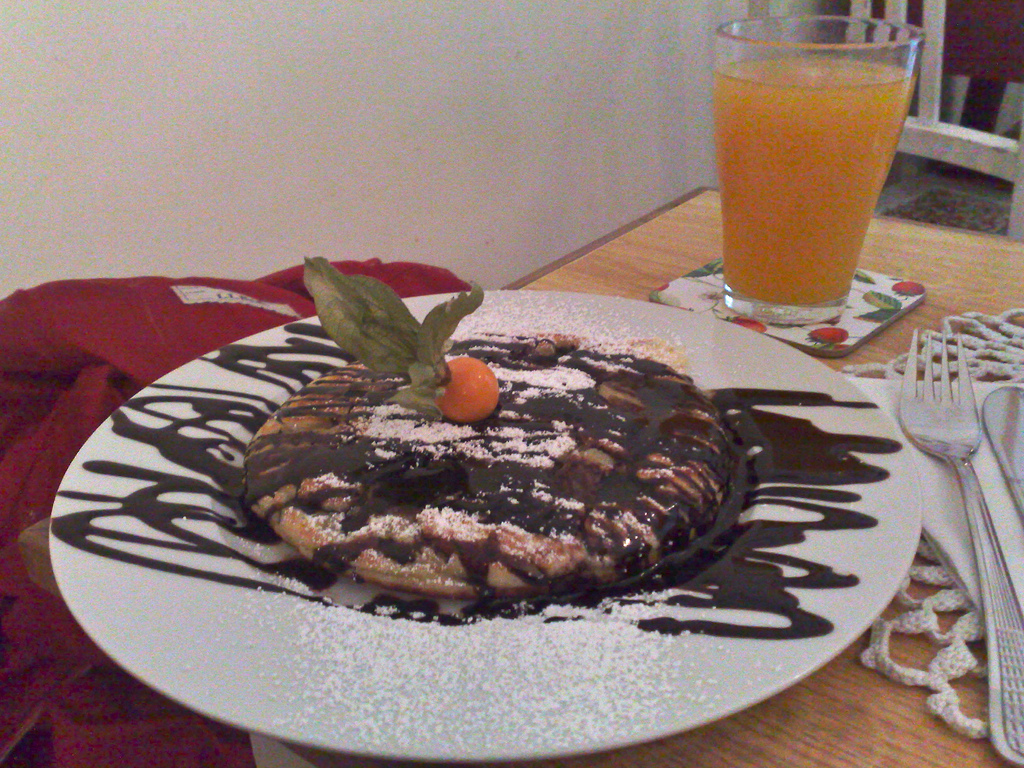
We spent the rest of the afternoon tweaking an iPhone app that’s under development (me), and colouring pictures of Berlin and playing Scribblenauts (Oliver).
Catherine found her way home through the rain around supper time and rather than cooking in or making our way out into the rain again we opted to just go down one floor to Primo Maggio, the Italian restaurant that, when the windows are open, we drift off to sleep listening to the hustle of.
As it happened, Friday night was a special night at Primo Maggio: the American singer-songwriter Xoe Wise was playing live, and much of the restaurant was taken up with a seemingly-infinite entourage. Fortunately we were able to carve out a little space for ourselves, and had a fantastic meal: I had pasta serve with cauliflower and chili oil, which sounds bizarre but was knock-socks-off fantastic. Catherine reported her pork was perfectly cooked, and Oliver inhaled his truffle ravioli. Along the way we were treated to this:
The lo-fi rendition doesn’t really to justice to Wise; visit her website for higher fidelity. Around 10:00 p.m. we ambled upstairs and fell quickly and soundly to sleep.
Saturday: more rain. Undaunted we decided to head to the the “vegan festival” at Alexanderplatz. Why, I’m not sure, as the prospect of soggy vegans doesn’t seem appealing; but we’re here to collect experiences, so.
Arriving at Alexanderplatz we immediately decided an emergency coffee and breakfast diversion were in order and so hopped back on the U8 and rode one stop up to Weinmeisterstrasse walked through the rain (did I mention it was raining?) to Barcomi’s Deli which is cleverly hidden in Sophie-Gips-Höfe, which I take to mean “the court that exists between Sophienstrasse and Gipstrasse.” Which is where we (cleverly) found it.
If Berliners know how to do one thing it is “laze around on the weekend,” and so we found Barcomi’s packed to the gills with people doing exactly that. Oliver and I approximated a Charlottetown Saturday morning by ordered smoked salmon bagels and Catherine had a BLT. The coffee was decidedly good. Then back out into the rain.
At this point I acquired an umbrella (Catherine and Oliver already tucked safe into their rain jackets were much less affected by the ever-present rain). It cost me €2.75, which is the best €2.75 I’ve ever spent. And it’s amazing how much umbrella you can get for €2.75, especially when you go for the full-length model.
Full and happy – and dryish – we decided to walk our way back to Alexanderplatz. At which point I remembered reading about Buchstabenmuseum, open perhaps only on the weekends, and only for a couple of hours, and right nearby, and managed to convince Catherine that this would make for a fun diversion.
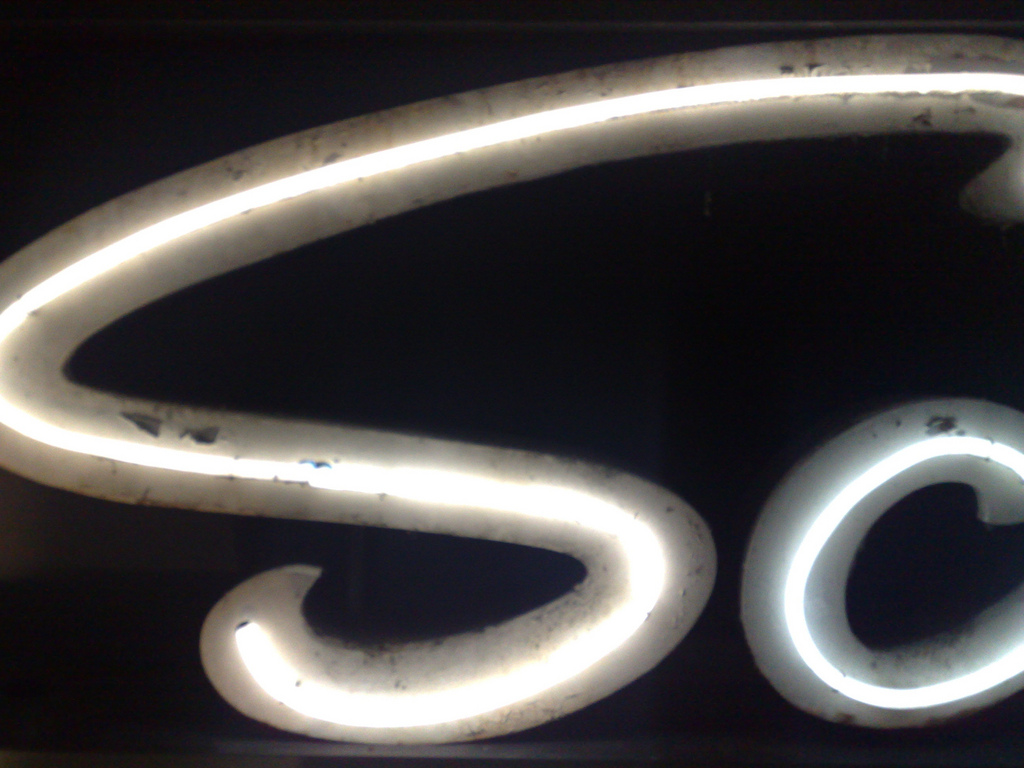
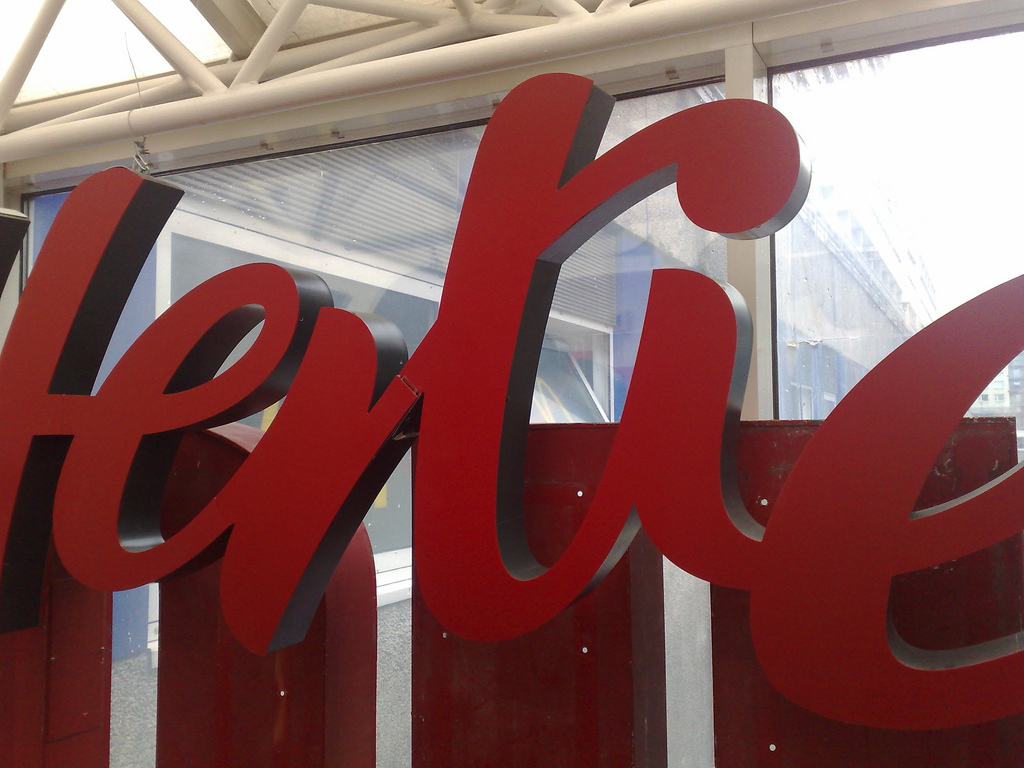
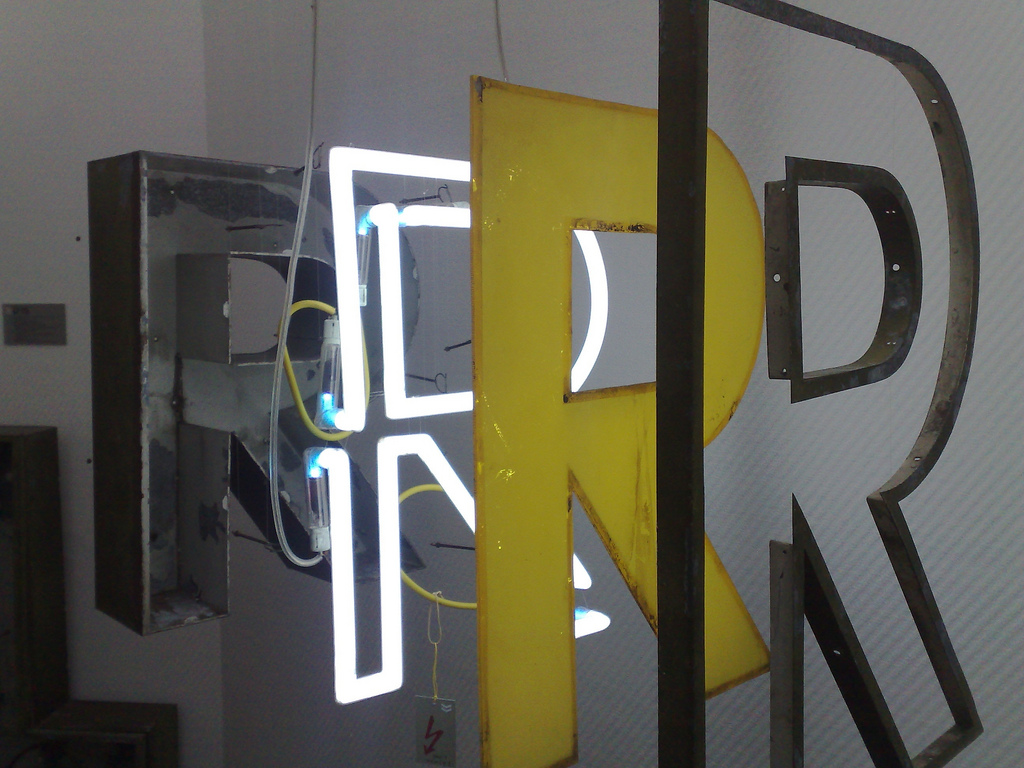
Buchstabenmuseum is a museum of rescued neon signage, arranged by colour and style and with helpful documentation. For me it was among the greatest museums ever. That Catherine and Oliver allowed me 30 minutes to wander around and take photos is a testament to their love and patience. I will have to remember to be more patient at the wool and Phineas and Ferb museums when we end up there.
Happily full of neon goodness we headed back to Alexanderplatz where, as predicted, we found the soggy vegans going hard at it. We weren’t quite hungry enough to line up for food, and not quite engaged enough to watch the inhumane-treatment-of-pigs videos, so we made a quick once-around and then got back on the subway to head east to Frankfurter Tor.
The allure of Frankfurter Tor was that Tiffany, the weekend previous, had told us it was the go-to place for used clothing at a large outlet of the Humana chain. Sure enough we found the Humana there, but before we could brave it we needed to eat again (see also “lazing around”) and so found our way down the street to Goodies, which, it turns out, may be a vegan café. Regardless, the food and especially the smoothies were good; Catherine and I both had the “ginger cooler,” which was a wall of ginger, albeit a pleasant one.
Fed (again), we walked back to Humana and discovered it to be four floors of Salvation Army Thrift Storesque goodness. Had we had more time, more fashion imagination, and more ability to withstand the vague stench of death that infuses all such stores we might have emerged victorious; as it was we quickly breezed through and escape unencumbered.
We’re obviously not cut out for the upcycling boho vegan eurolifestyle.
As such, we headed to Potsdamer Platz, thinking a movie – Larry Crowne at the Cinestar at 4:15 p.m. in this case – might be just what we needed for a rainy day.
What we hadn’t factored in was (a) that every other English-speaking person in Berlin had the same idea and (b) Potsdamer Platz is a barren simulacrum of urbanity.
And so, still in the ticket line at 4:30 p.m. and growing evermore uncomfortable at the lack of shawarma shops we ran back to the subway and headed back to warmer ground, ending up, instead, at the 5:15 p.m. showing of Beginners at the Babylon Kreuzberg, a movie that passed Oliver’s movie filter, but that might have been one-too-many “complicated family dramas” for his kidfulness. When I asked him what the movie was about once it was over he said “struggles,” so he obviously got it. But it may be time for The Smurfs next.
Emerging into the (damp) Berlin evening we walked the short walk home, picked up a couple of €2,99 pizzas at the place up the block, and settled in for the night.
Here’s a video of Ólafur Arnalds in action shot by a member of the audience from the same venue (but the next night’s concert) as I saw him on Monday. This gives a good taste of the “audience participation” as well as the music that results. Remembering, he’s making this up on the spot.
On Sunday afternoon I started to think about what I might print this week on my Tuesday letterpress printing day at Druckwerkstatt. I had an idea that I wanted to make a simple alphabet book, both to try out the geometry and spacing of printing a book that could be cut and folded from a single print on a single sheet, and also because I love the collection of wood type that the studio has, and I’m eager to take it out for a ride as much as I can.
You can see where my imagining led me in the bottom of this photo: there’s a little paper mockup I made from a scrap of paper that shows how, by arranging alternating rows of letters right-side up and then upside-down, and making a few cuts and folds, I could achieve what I wanted.
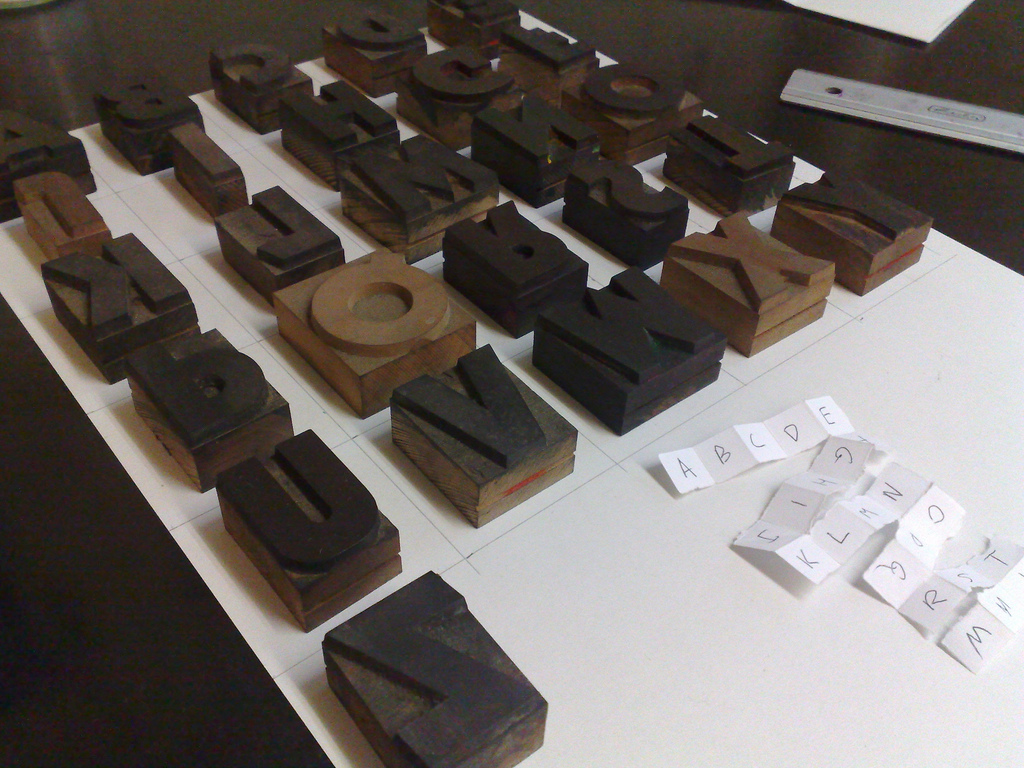
Also in this photo you see the wood type I started to assemble in the studio to see if this would actually work. Fortunately, under a pile of paper in the corner of the shop, I found a really nice sans-serif face with every upper case letter present.
What followed amounted to 90 minutes worth of jig saw puzzling: I needed to find a way of arranging the letters on the bed of the proof press so that they were evening spaced and each centered in their own box. To do this I divided a 30cm by 36cm piece of paper into a grid of 6cm by 6cm squares, placed this sheet on the bed of the press, and then arranged the letters on the grid:
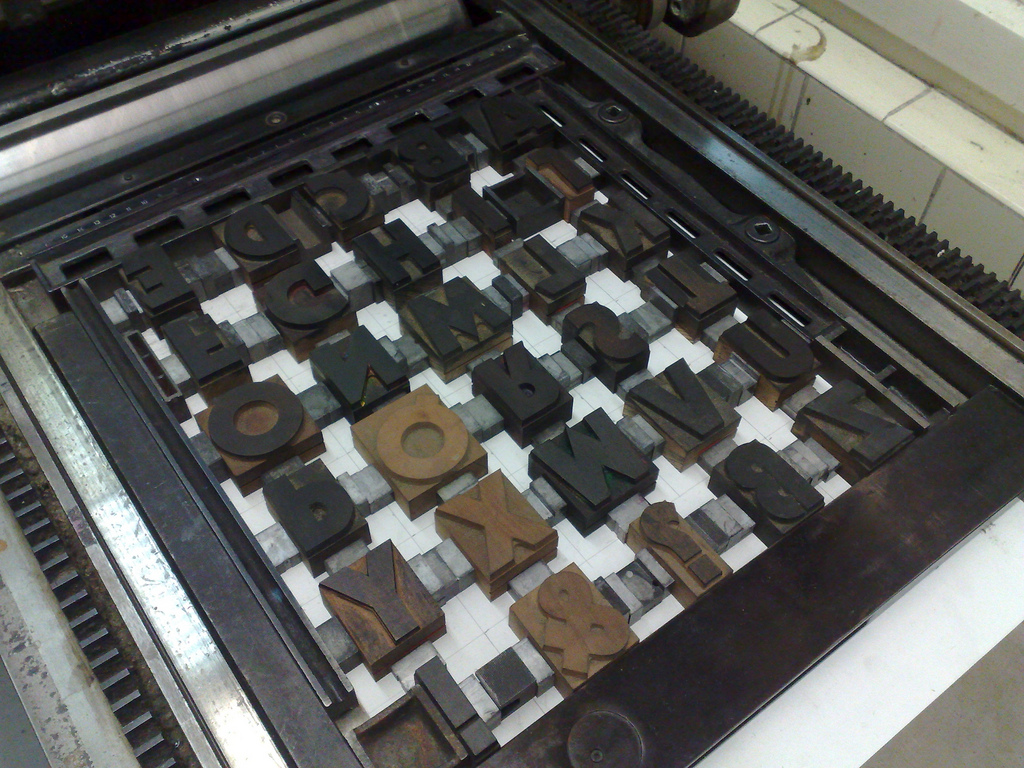
I found, to my surprise and delight, that a piece of 24 point spacer placed between each letter handled the “up down” spacing perfectly (all except for the letter Q, which had a descender so needed special handling). For “right left” spacing I simply using spaces as required, eyeballing the centering inside the squares penciled on the guide sheet. It took a while to get everything just right, and more than a few test prints to get it all really just right, but in the end I was very pleased with the result.
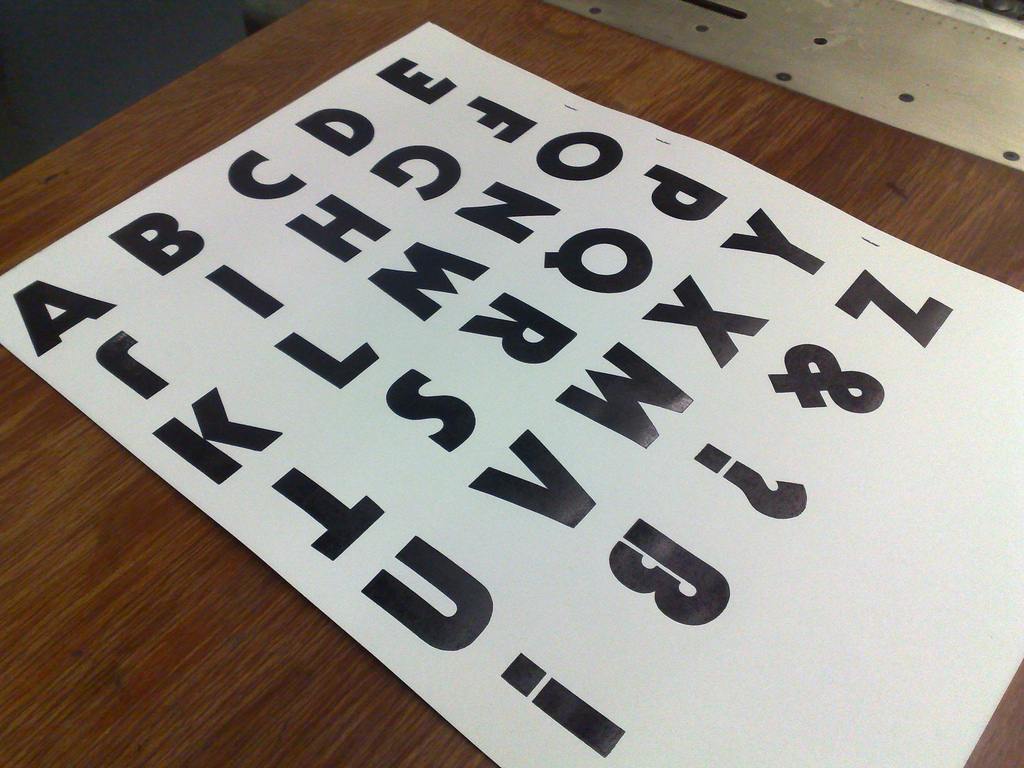
Once I’d perfected the layout, I spent another hour or so on makeready – making sure every letter printed equally black – and getting to understand the right amount of ink to roll onto the letters for a good print (the proof press is only partially working, so the inking, which would normally be handled automatically by the rollers on the press, had to be done manually for every print pulled, using an ink brayer).
Once I had a good print ready, I ran it through the press again between two blank sheets of paper to “quick dry” the ink, and then manually folded and cut to match my original mockup:
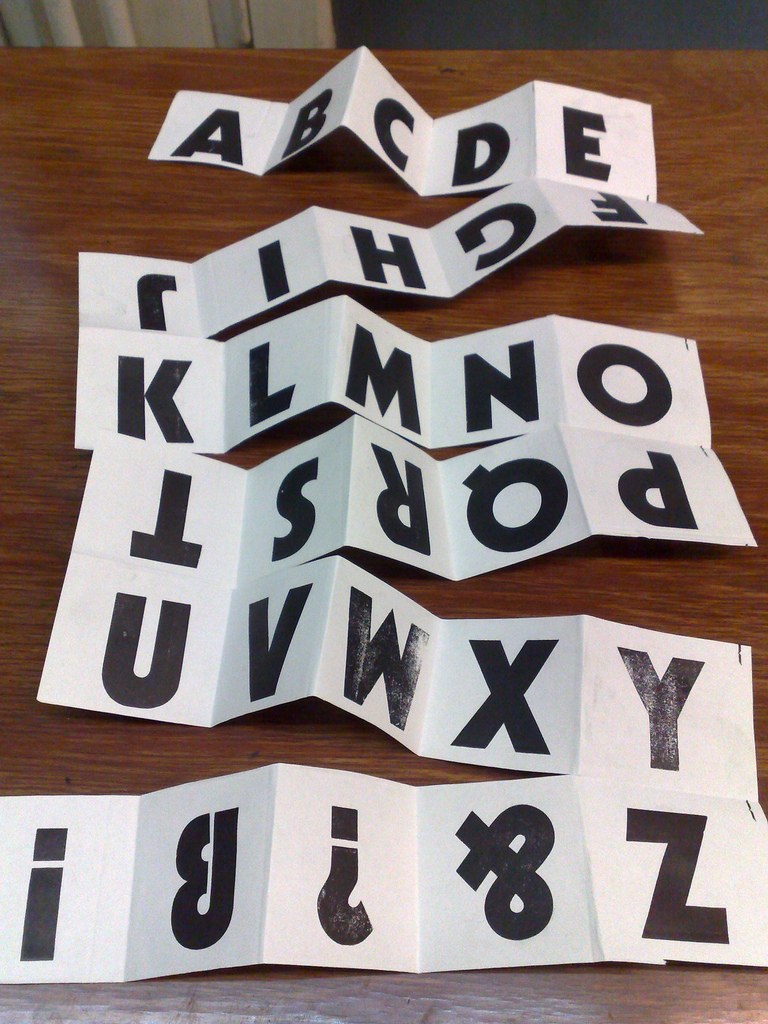
Magically, when I folded it all together, it actually did make a book. You’ll have to imagine that, though, because in my reverie I neglected to take a photo.
After making 40 prints – which took about an hour because of the whole “ink the roller, walk across the room, ink the type, print, walk print over to the drying rack in the hall, repeat” process – I took lunch and then returned to see what I could do about getting the printed pieces ready for my subscribers to turn them into a book.
In the book bindery down the hall there’s a giant paper cutter that I used to trim the excess off the right and bottom of each print:
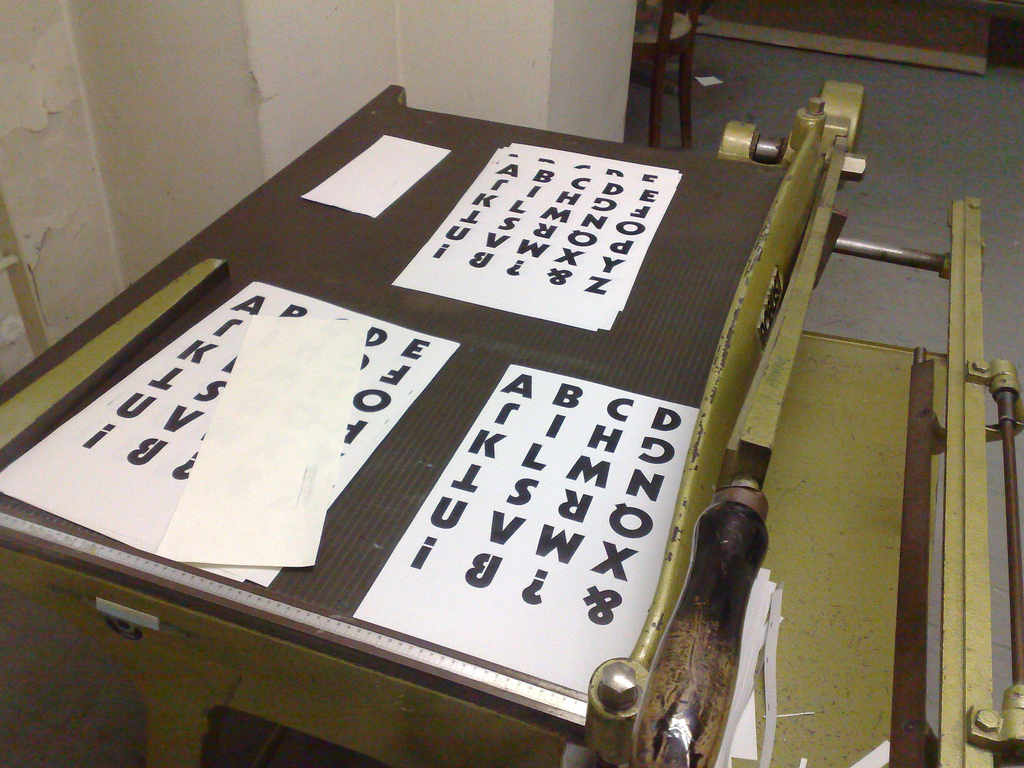
Next I needed to fold the prints along the 6cm by 6cm lines surrounding each letter. Fortunately, right beside the cutter I found (and figured out how to use) a machine purpose-built with this in mind, a “scoring machine”:
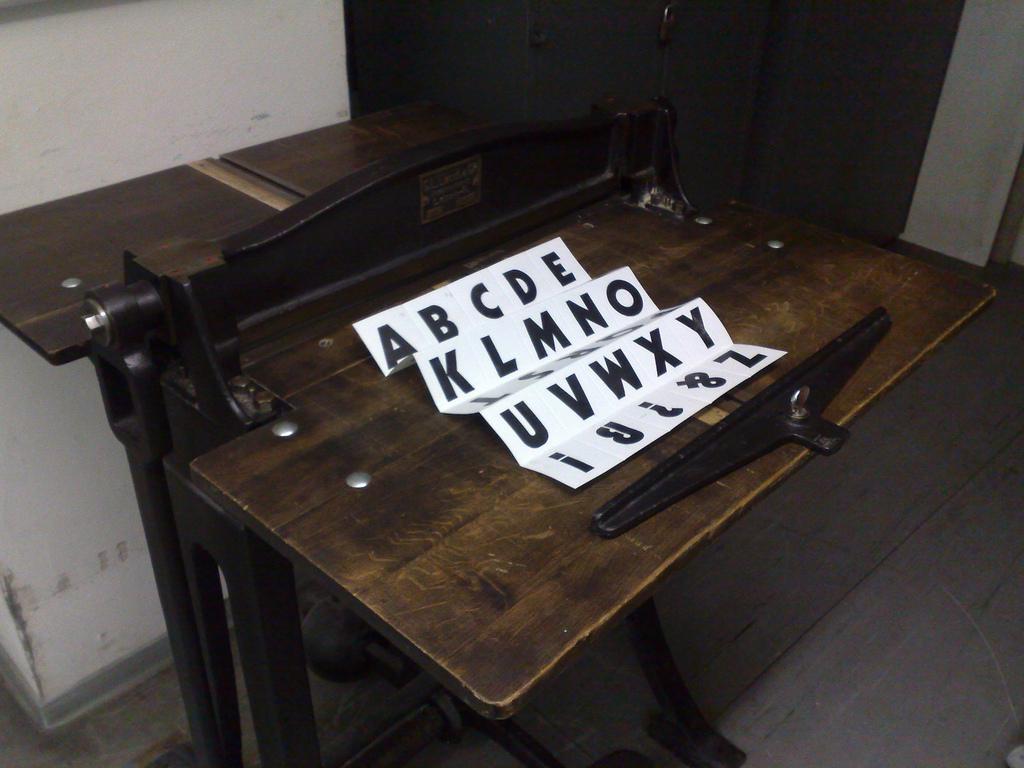
After a few sacrificial runs to figure out how the spacing worked, the machine made quick work (well, quick work times 40…) of the 9 scores on each sheet that needed to be made.
When I was all done I had 31 copies of this, ready to fold and mail:
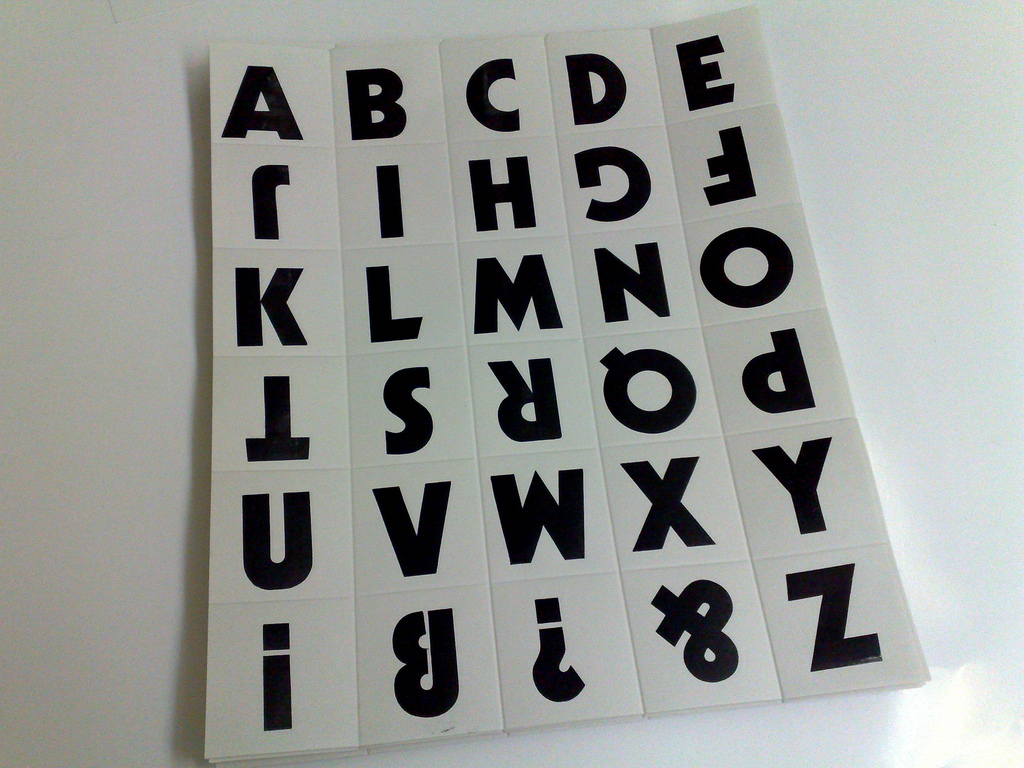
On the way home I stopped in at the Grúne Papeterie, an excellent stationer on Oranienstraße and picked up 50 envelopes recycled from topographic maps and once I got home I spent an hour hand-addressing an envelope to each of the 31 subscribers.
This afternoon I folded each print along the scored lines so that it would fit in a small envelope, and when I was done this, here’s what I had:
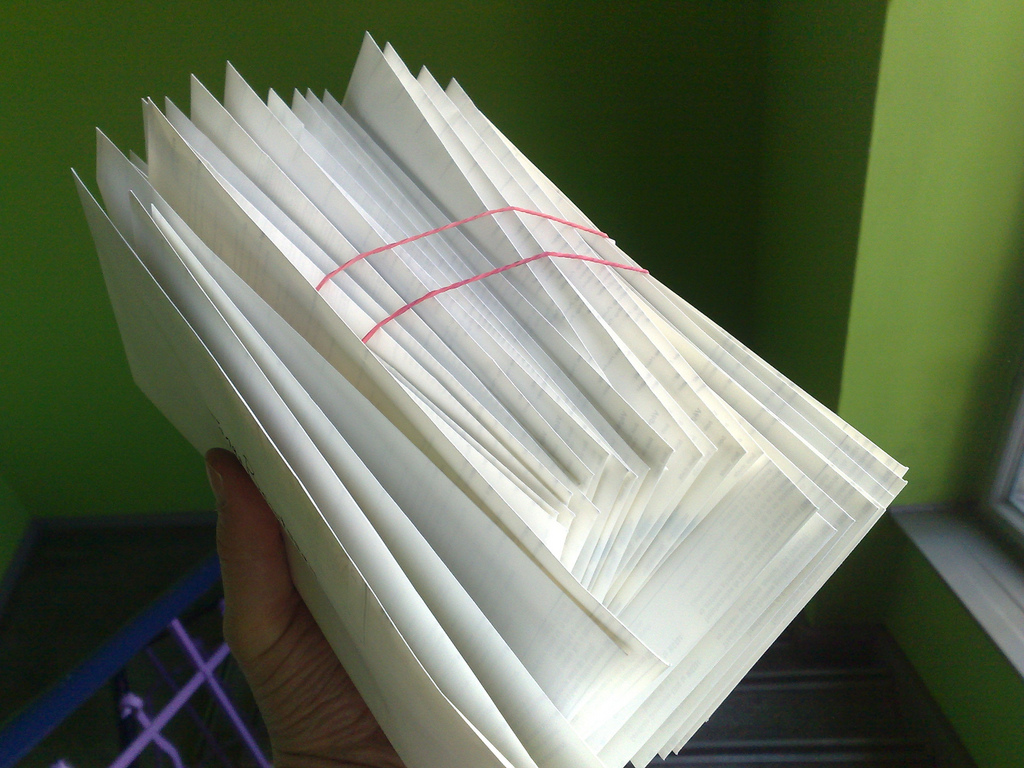
To my surprise and delight, to mail a thick envelope like this anywhere in the world costs only 75 cents, and so a visit to the post office and €23 later, the alphabet-books-to-be were in the mail to Taiwan, Sweden, Denmark, England, Germany, the USA and Canada. I’ll be emailing subscribers a little more detail about the “how to turn this into a book” process shortly.
I’m pretty sure that I came to the music of Ólafur Arnalds through Sigur Rós, the gateway drug for Icelandic music (I came to Sigur Rós on an Icelandair flight; I fell asleep listening to their music and when I woke up I was a diehard fan).
Even thought Arnalds’ music has been in regular rotation on my iTunes (and as my mobile phone ringtone), I knew little about him other than his Icelandicism, and so when I saw a notice in Tip Berlin that he was playing this week here in Berlin, the fates seemed to be organizing me to see him live. With a little bit of web jujutsu I was the owner of a ticket for Monday’s show (the “official” ticket site was closed to orders and I ended up at HekTicket, where I got a ticket cheaper and more easily that I would have otherwise).
In my enthusiasm I tweeted:
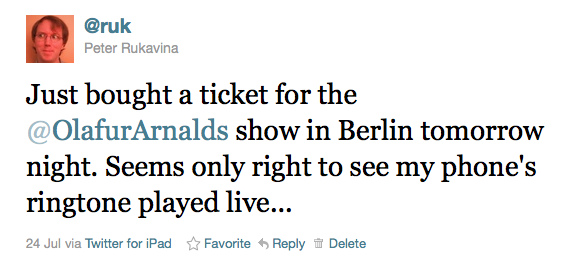
A little while longer came an unexpected reply:

Which, of course, led me to this description of the solo tour, which says, in part:
Each night Ólafur will be taking these small audiences on a journey around his creative world. While explaining the details and techniques of the creative process, he will also be actively involving them in the dynamic decisions related to each composition. Alongside a continuous dialogue with the audience, there will also be an attempt to include them in the composition. People will be asked to clap their hands and stomp their feet while Ólafur records these sounds as an ingredient for loops and beats. Likewise they will be invited to sing like a choir and have their voices electronically manipulated into the composition and thereby fabricating a unique collaboration between artist and audience.
Rather than being disheartened – who can be disheartened by the lack of music you’re only peripherally aware of anyway! – I was excited by the prospect of seeing music not only played live, but also made live.
And so I found myself in the Roter Salon on Rosa-Luxemburg-Platz at 9:00 p.m. on Monday night with a crowd that included, it seemed, everyone from patches-on-elbows professor types to earring-lipped young rockers. It could have been a Joni Mitchell concert except there was more beer and everyone was much better behaved. The Roter Salon – “the red salon” – is, indeed, very roter:
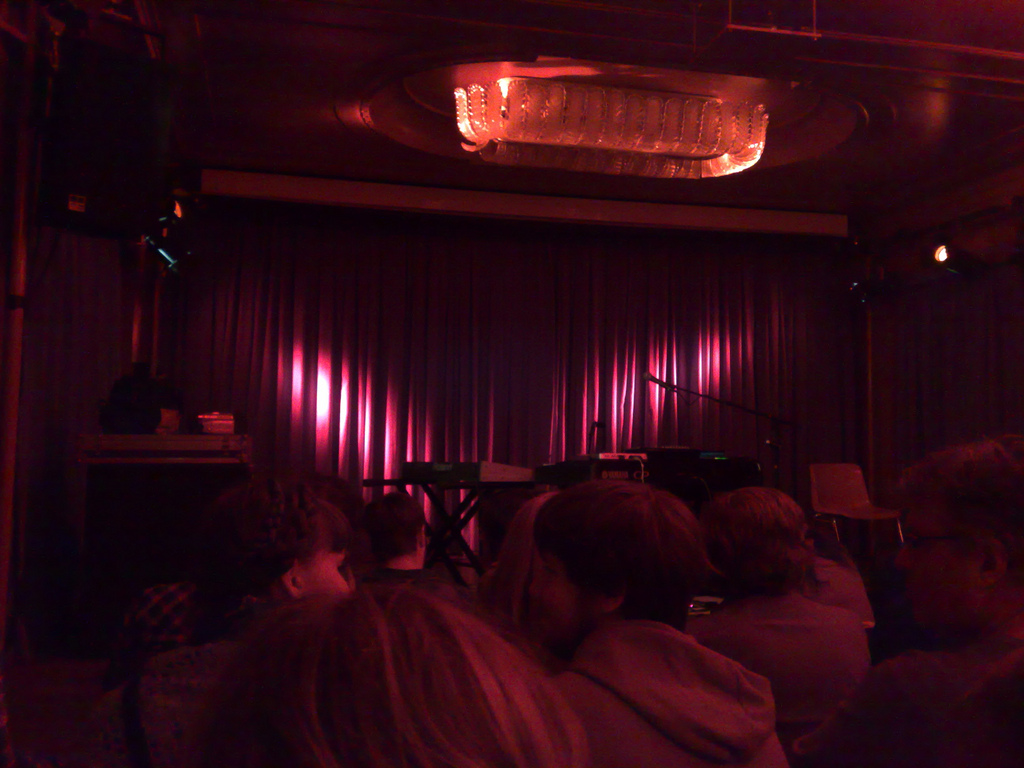
About 9:20 p.m. Arnalds took the stage and the festivities began.
Is there any sweeter music to the conversational ears than that of native Icelandic speakers speaking English? It’s like taking a North American English speaker and applying equal amounts of capers and molasses to the vocal chords: the result is reedy, sweet and minimalistically musical. And we audience got much opportunity to hear it, as Arnalds really did provide a “continuous dialogue with the audience,” full of wit and music wisdom.
The conceit, if you didn’t catch it above, was that Arnalds was to perform a concert of songs composed on the spot based on a day’s worth (or perhaps a lifetime’s worth?) of pondering. To carry out this mission he equipped himself with an array of musical gizmology, ranging from a Mac laptop to a Roland keyboard; indeed step one for the night was a walk-through of what each device did. Here’s what it all looked like:
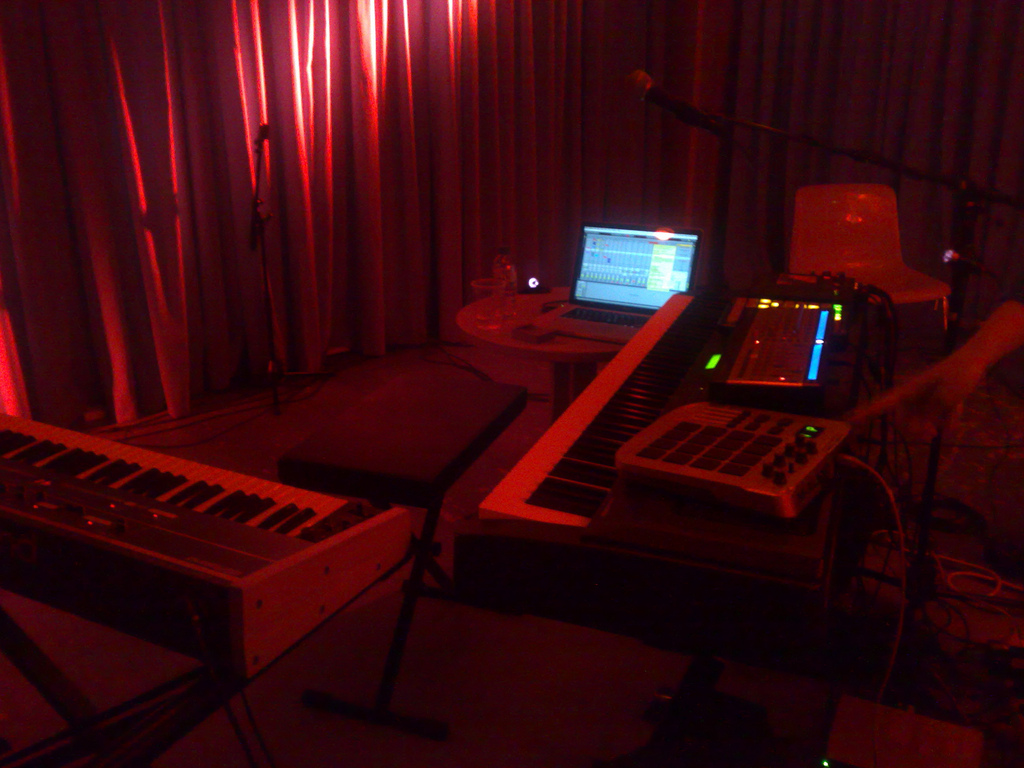
And then began the music.
I’m not enough of a musician nor enough of a student of music to put a finger of what you call Ólafur Arnalds’ music – in SoundCloud it’s tagged everything from “classical,” “post-classical,” and “neo-classical” to “pop.” He said, partway through the night, that he had recently realized that he “makes sad music for a living,” and there is no doubt that several of the pieces he composed an played on Monday were capable of bringing tears to your eyes.
But it’s not sad in a New Orleans kind of way, it’s sad in a way that is, well, hopeful. Here, have a listen for a second: Lynn’s Theme, Hægt, kemur ljósið.
To watch Arnalds do what he does close up – one of the benefits of going solo to a concert is that you can cherry pick a single seat right up at the wrong – was priceless: I’m as much of a techno-skeptic as the next guy, and I’ve always had my doubts about whether music made of bits is really as musical as that made the old analog way (this coming from the guy who accompanied his high school band’s performance of the main title to Chariots of Fire on a Commodore 64).
But watching Arnalds all that skepticism melted away; indeed it was hard to tell, most of the time, where he ended and the technology began. It was like watching – and I mean this only in the most positive way – a member of the Borg make music: man wedded to machine. That guy was inside that gear.
What resulted was the most transcendent, beautiful music. That it was being “made up on the spot” made it ever more so.
And so went the evening: some music, some stage patter, a guest appearance by the cellist Anne Müller (who plays a mean cello), some more patter, some more music. For an encore – for which there was an enthusiastic call from the audience – Arnalds played one more improvised composition followed by Erla’s Waltz from his 2009 album Found Songs (itself another feat of songwriting, in that case one-song-a-day for seven days).
And my ringtone? Well, as it turns out, he did play it, perhaps unaware that he was fulfilling my original tweet:

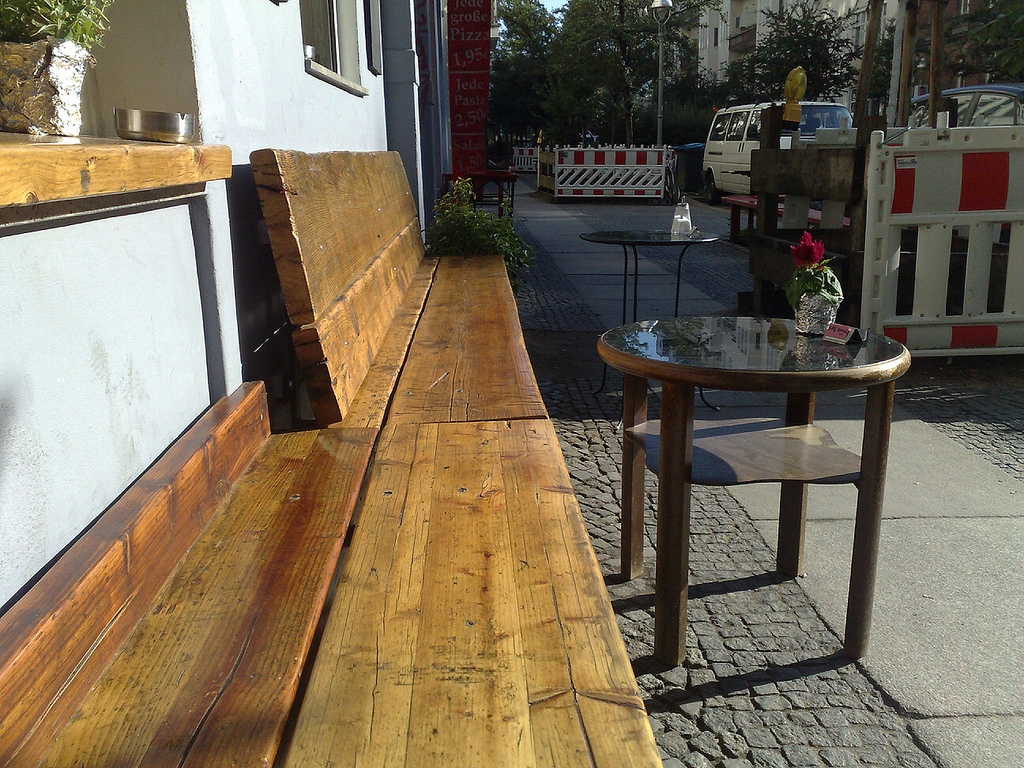
 I am
I am